Frank F. Weber's Blog, page 22
June 5, 2017
Perspective, Life Lessons & Don’t Cry Over Spilled Dr. Pepper
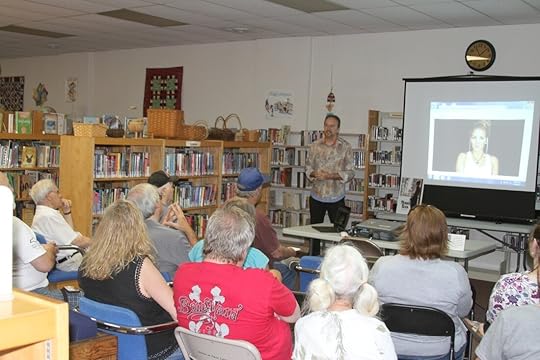 Frank speaking on Murder Book at the Pierz Library I am very thankful for the support I’ve received from people with Murder Book. I have had so many great conversations with people about it. Don’t hesitate to talk to me about it, as I enjoy sharing with people some of the subtle clues that hinted toward the ending.
Frank speaking on Murder Book at the Pierz Library I am very thankful for the support I’ve received from people with Murder Book. I have had so many great conversations with people about it. Don’t hesitate to talk to me about it, as I enjoy sharing with people some of the subtle clues that hinted toward the ending. Enjoying life is all about perspective. I was reading a letter Grandma Elizabeth Weber wrote after she flew to Nevada to visit Mary and Al Konen. She wrote, “We had to fly into a head wind so the trip took longer than expected. This gave us more fly time for our money.”
We had our summer party last weekend, which was attended by 50 family members. We played music outside (guitars and keyboard) until it was too dark to see. Thomas Wolfe wrote, “You can never go back home again.” (Maybe that was just him.) His point was that the place you long for no longer exists. I would take it a step further and say that you also never return the same person. Wolfe’s quote is usually interpreted in its most pessimistic form. I also think you have the opportunity to return as a better person, to people who may have also matured. There’s no guarantee, but it’s a nice consideration. As they say, “Time heals all wounds. Time wounds all heals.” I do know my family was always close, and now we’re closer (even though we see each other less often).
I’ve learned lessons from the variety of the poor choices I’ve made, and I will share some of them. I guess I learned to choose wisely, as you get to make your choices, but you don’t get to pick your consequences for them. Much of my foolishness stemmed from ill-fated attempts of humor.
I had a high school journalism class with a good friend, Tammy, and we were often (as friends do) mildly agitating each other. Before everyone had computers, the school newspaper was put together by typing up articles, gluing them down, and then taking a picture of the newspaper page, which would be printed. So we had gallon jugs of rubber cement in the journalism room. I thought it would be funny if she came back to study and she wouldn’t be able to open her book. So I glued together every page of a journalism book together, and left it in my locker to dry overnight. I’m not into destroying others’ property, so I took an extra book off the shelf (it was the last year we were using this book) and glued it. The next day, when Tammy left class to do an interview, I exchanged this book with the one sitting on her desk. The interview didn’t go well and Tammy returned frustrated. We had a test coming up so she decided to study. Unfortunately, her book wouldn’t open. When she realized what had happened she assumed the boy sitting in front of her had glued it. Irritated, she picked up a jug of glue and dumped it over his head. He stood up and swore for what seemed like two minutes straight. The teacher hit a button which brought the principal, and the fiasco escalated. Ultimately, the boy who swore was kicked out of school for two days. I was sitting in the back of the room watching this unfold, thinking this isn’t how I saw this playing out. I stood up and told everyone I was responsible for starting this whole mess and no one should have a harsher penalty than me. It didn’t change any of the consequences. I lost a grade on my report card, but I wasn’t suspended from school. When I reflect on it, I think the boy who stood up and swore was the least to blame in the whole ordeal. The lesson I learned was that when you start something with a bad choice, you have no control over how it plays out.
Maybe another lesson is that people don’t like comedians. What’s the first thing a mugger tells you? “Don’t try anything funny.”
It wasn’t the last time I was in trouble in school, but it did reduce the efforts I put into stupidity. The last time occurred in a high school math class and perhaps could be characterized as a failed attempt at sex education. I was supposed to be working on the assignment when I turned around and began talking to the girl sitting behind me. After a couple minor insults launched back and forth she referred to me as “a dildo.” I said, “Well there are worse things I could be.” It was obvious she didn’t know what a dildo was, so I educated her. She responded by slapping me. Her boyfriend, now her husband, was sitting next to the two of us laughing. The math teacher, Mr. Kapsner, looked at us, made a reasonable educated guess and said, “Weber, go to the office.” He figured if she slapped me, I deserved it. As I meandered to the office, I wasn’t upset over being slapped or even being kicked out of class. I was bothered that my mom would hear that I was in trouble again. I started thinking about all the stupid things I’ve done, from trying to make it rain in the chemistry room, to firing a football over all the parents' heads (who were watching the game around the track) because I was mad at a ref. I always took responsibility, but I could see the pain in mom’s eyes over feeling somehow she failed. It was time for mom to get a reprieve from feeling bad over my actions. Even though I could rationalize my behavior, at some point we all have to look at the effect our behavior has on others. I committed to just shutting up, and staying out of trouble. I wasn’t going to tell the principal exactly what happened, as that didn’t serve anyone well. I’d tell him I said something stupid and I got slapped. Everybody would believe it.
By the way, I did get an unsportsmanlike penalty for firing the football off the field. I’ll never forget that when I came to the sideline no one stood within 20 yards of me. I assumed they thought I finally lost it. My friends later told me they knew I’d be running “killers” the rest of the year and they didn’t want to be part of it. I was fortunate not to get ejected and I had the opportunity as quarterback to bring our team back from behind for a win. I almost lost the opportunity to help my team because of my own arrogance, and I am thankful I had a coach who allowed me to redeem myself. Thank you John Hellie! I think a good coach, teacher, parent, counselor, friend, etc. sees a potential in you before you recognize it in yourself.
Once when chemistry teacher Jerry Palo called in sick, I convinced Ed Naill that we should try to make it rain in the chemistry room. We had a cloud of steam, dust blowing, and water running down the window panes, when a teacher walked in and asked, “What are you doing?” I told him, “Trying to make it rain.” He started laughing, and as he exited said, “You didn’t see me.” But the principal noticed the water on the windows and barged in. He asked what was going on and I told him, “A chemistry experiment.” We had to shut all the Bunsen burners off (that were boiling water) and clean up the mess. I’ll never forget my friend Eddie telling me as we were cleaning, “You just keep thinking Frank. That’s what you’re good at.”
I still find some humor in not explaining myself fully. I went to a hardware store and bought some white spray paint. I told an employee I wanted the cheapest white paint they had. He suggested that I may wish to consider a better brand. I told him I wanted something that wouldn’t stay on long. When he asked why, I told him “I’m going to paint my lawn,” and left it at that. Preston was having a volleyball party and we decided we’d paint the out of bounds lines on the grass.
We offer a healthy relationships and healthy sexuality class at my business. So at one point, I went to a pharmacy and bought every type of birth control they had for the class. The pharmacist asked, “Big date this weekend?” And I said, “Yes.” Brenda and I actually had a big date that weekend. It wasn’t why I was buying the contraception, but it was true. He then tried to explain to me that I didn’t need everything. I just said, “You can never be too careful.” This, upon reflection, is probably not true.
I find myself in a variety of odd situations that create humor, even when it’s not intended. I was driving to southern Minnesota to complete some assessments and stopped in through a drive-through to pick up lunch. I had a large bottle of Dr. Pepper, which didn’t quite fit in the cup holder in my car. When I pulled up to pay, I realized I didn’t have any cash in my billfold, but thought this is okay, because I had a large change jar in my car at the time. When I reached for the jar I realized my pop had tipped over and emptied into the change jar. So I picked up this jar full of coins (now soaking in pop) and paid. I thought it was best to just pay, and leave them wondering. The next time I stopped into the same drive-through the attendant looked at me and yelled into the restaurant, “It’s that guy again!”
An important lesson I’ve learned is that there are a thousand ways to respond to every situation. Someone can be angry and you could stand up and dance if you want. You don’t have to respond as people expect.
Psalm 22 starts out, “My God why have you forsaken me.” I will never ask God this question because I can think of a 100 good reasons. Yet, still I’m blessed with God’s grace so I try to be a better Christian today than I was yesterday. I know that the more I help others, the more good things happen to me.
By the way, I’m putting a blog together on local bands over the years, so please contact me if you have information to share.
Quotes:
There are a couple quotes I often share when I talk about growing up in a large Catholic family.
1. What do you call a woman who uses the rhythm method of birth control?
"Mom”
2. I was raised Catholic. We didn’t read the bible, we just took everyone else’s word for it. We did read the bulletin.
I’ll also throw in a George Carling quote. A police officer approached me after an accident and told me, “I want you to explain what happened, using your own words.” My thought was, “Why can’t I use the same words everybody else uses. It’s a lot to ask someone to make up words on the spot.”
Thanks for listening,
Frank
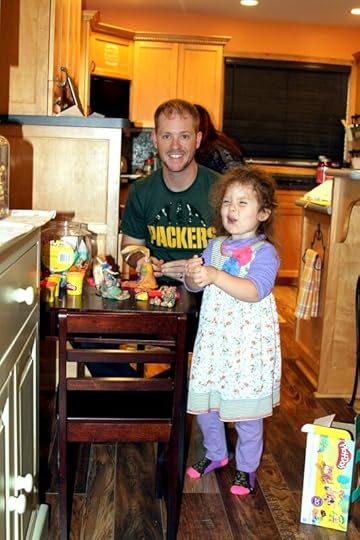 Branden playing playdoh with Kaycee
Branden playing playdoh with Kaycee 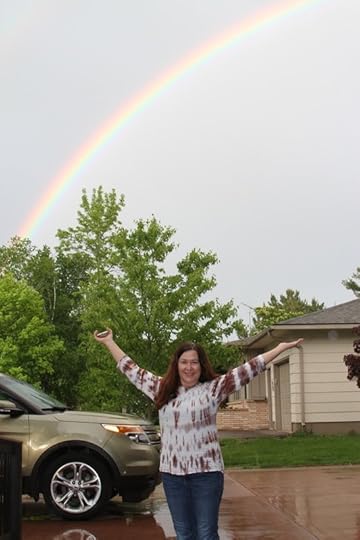 Brenda brings a rainbow
Brenda brings a rainbow 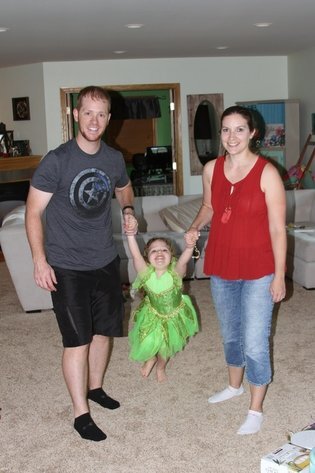 Branden, Kaycee and Nicolette
Branden, Kaycee and Nicolette 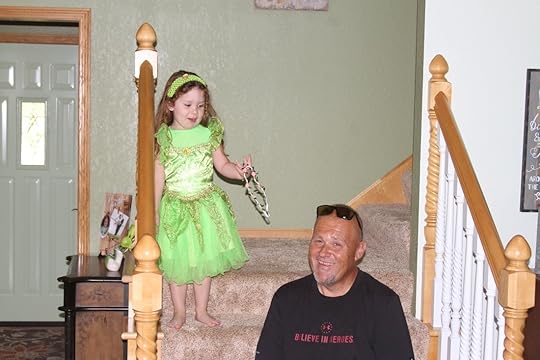 Kaycee and Grandpa Dave Deal
Kaycee and Grandpa Dave Deal  Kaycee at the summer party
Kaycee at the summer party  Pierz has another great baseball team this year. This is pitching ace Matt Tautges
Pierz has another great baseball team this year. This is pitching ace Matt Tautges  Brandon Dickman
Brandon Dickman  Luke Girtz after his 2nd double of the game.
Luke Girtz after his 2nd double of the game.  Preston Rocheleau
Preston Rocheleau 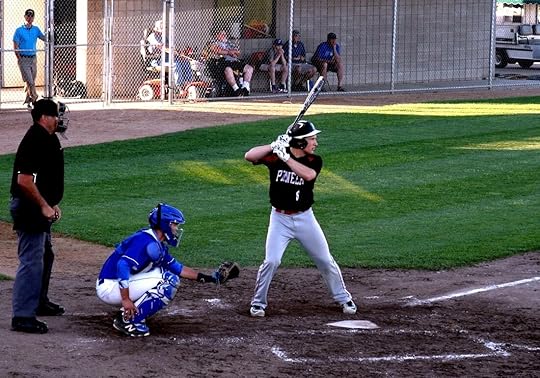 Lane Girtz
Lane Girtz  Alec Lochner
Alec Lochner  Brett Kapsner
Brett Kapsner
Published on June 05, 2017 14:07
May 29, 2017
Linda Tembreull, Hardball and Softball
Frank Weber is speaking about the cases that led to the creation of Murder Book on Saturday, June 3, at the Pierz Library at 11:00. Books will be for sale, and he will be available to sign books both before and after the 30 minute presentation (from 10:00 to 1:00). I want to dedicate my blog this week to Linda Tembreull (1947 to 1969), who was raised in Pierz but murdered while attending St. Cloud State University in 1969. The day was warm for November with the temperatures in the mid-40’s. It was the day the Beatles Abby Road album rose to #1 in the charts in the U.S. Linda Tembreull was attending a speaker at SCSU and was offered a ride by Leo Albert Kampa, age 41, back to her campus housing where she lived with 4 other female students. Linda’s body was found November 1, 1969 in a cornfield near Northfield, Minnesota. She had been shot twice in the head. Leo Kampa was arrested November 2, 1969 in Phoenix, Arizona. Kampa would later write in prison that the gun discharged by accident. This doesn’t really explain his reason for holding a loaded gun to the head of an innocent unarmed young woman.
I was a young child at the time, but my older siblings share that the message in the community at the time was “Don’t talk about it.” My older sister was friends with Linda’s sister and they never spoke of it. A change occurred in rural Minnesota in the 1960’s. In the 1950’s many teenagers still stayed around and worked in the communities they were raised in. But in the 60’s high school graduates left to larger communities and parents feared what would happen when their innocent Christian children were exposed to the dangers of the world. It would have helped everyone to have talked about it and I think it’s a disservice to Linda to not talk about her life.
The irony is that even though people had the perception that the world was safer back then, it wasn’t. The homicide rate in 1969 was almost double what it is today in the U.S. (It’s just that people didn’t talk about it.) In 2014, the homicide rate was lower than it’s been in 50 years and even though some cities experienced increases in 2016, those cities aren’t near as dangerous as they were in the 1980’s and 1990’s.
Today we’ve informed everyone better of the dangers, but also scared the hell out of everyone. Parents have become content with the kids staying inside. I drive through towns in the middle of summer and sometimes see no children playing outside. People need to form a sense of community, no matter where they live, and look out for each other. When our kids were little, Brenda and I played baseball (using a tennis ball) with Nicolette, Shane and Preston every summer night. Brenda played in boys little league when she was younger. They all got good at it, but none ultimately played high school ball. They trained hard for fall and winter sports, so they all ended up in track as it fit easier with their training schedules. It was a fun family event, as baseball gives you the opportunity to talk while playing.
Let’s talk about baseball, while the Twins are still in 1st place. Baseball has always been huge in the Pierz area and there are many stories and legends. When the Brainerd paper had an article expressing concern that Brainerd was splitting their talent into 2 teams, people in the Pierz area (a town 1/16th size of Brainerd) laughed as Pierz had 5 amateur baseball teams at the time. Those teams included the Harding (Supersonics and Dinosaurs), Shady Brook Broncos, Lastrup (Lakers and Bulldogs), Center Valley, Pierz (Pirates, Cubs, Dolphins, Brewers, Bulldogs), Buckman (Bees, Bucs, Billy Goats), Genola Brewers, Daggett Brook and there even was a team that played in the area at one time called SLLGC (South Long Lake Gun Club). We played on one field that sloped so much you could only see the left fielder’s head.
The old-timers tell stories about the variety of great players who played some with the Pierz Pirates, including Leo Litke, Harold Meyer, Al Boser, Pete Newman, Rollie Schriener, Roger Terhaar, Art Preimesburger, Elmer Sitzman, Roger Hoheisel, and Lenny Pohlkamp, along with stars from other local teams like Louie Boser and Marvin Sitzman (Center Valley), Roman Miller (Buckman), Dewey Girtz, Cliff Meyer, and Blaise Boser (Genola Brewers). My dad, Leo Weber, was proud of having coached the Pierz Cubs to a league championship, back when the Pierz Pirates were the powerhouse team. The story is that catcher Tom Meyer kept a round steak in his mit to soften the blow from hard throwing hurlers.
In my time there were some great pitchers like Sev Poser (Pierz), Duane Paulson (Lastrup), Rick Sczublewski (Pierz), Larry Litke (Shady Brook), Charlie Weber (Pierz), Danny Litke (Harding), Billy Pohlkamp (Buckman),Tony Veith (Fort Ripley), Chuck Stott (Onamia), Dean Rocheleau (Lastrup and Pierz), and more recently Dan Rocheleau (Lastrup and Harding), Scott Gieger (Buckman) and Chad Weiss (Pierz and Lastrup). There were also guys who were a threat to knock it out of the park every time they stepped to the plate like: Jerry Pohlkamp, Jerry Van Kuren, Tony Veith, Bobby Britz, Bob Lochner, Jim Stott, Ron Litke, Mike Poepping, Clyde Athman, and more recently Steve Athman, Dave Rocheleau, Scott Boser, and Jason Sadlosky. (Bobby Britz—now in his mid-60’s—caught a double header for an amateur baseball team in Shakopee last summer.)
There were some very impressive teams. The Lastrup Lakers went to state 5 years in a row with all Lastrup players (a town of 100). The 1999 Buckman Billy Goats were state champions and Scott Boser was the state tournament MVP. The Lastrup Lakers have recently had a series of impressive state tournament runs. The Lastrup/Shady Brook rivalry led to fist fights with fans. When I played with the Pierz Brewers we played the Harding Super Sonics every year on Memorial weekend. People camped out and partied on the baseball field after the game in an event called “The Derelict Convention.” Notoriously tight Victor Malinoski used to fly his airplane over during the game (which I’m sure didn’t meet legal flight standards). The engine would shut off, the plane would drop, but he would eventually get it started again and resume on his way. While observing this craziness during a game, opponent Paul Froncak commented to me, “He’s so tight he looks over his glasses instead of through them, so he doesn’t wear them out.”
The longest game in the history of baseball was played by 2 Pierz teams on July 23, 2005. The Lastrup Lakers beat the Pierz Brewers 1-0 in 28 innings. Jason Sadlosky pitched the first 14 innings (193 pitches) for Pierz. Danny Saehr pitched 14 innings in relief for Lastrup. Reggie Litke caught the first 25 innings, and then came on in relief to get the win. There was a strong wind blowing straight in from center field the entire game making it difficult for anyone to generate an extra base hit. Nicolette and I were at the game for the first 26 innings, but Nicolette was teaching tennis lessons at the time so we needed to leave.
There was a time when towns would pay pitchers to throw for them. Bud Grant (Minnesota Vikings) had pitched for Pierz and Whitey Skoog (Minnesota Lakers) pitched for Little Falls. Along with Scott Boser, Little Falls residents Rich Weigel and Bob Fenske were also former state tournament MVP’s. There were some great nicknames like Kevin “the Blade” Gilbride and Bob “Banana Tanana” Litke. Most nicknames only lasted a game or 2. I remember referring to an outfielder, who managed to get hit in the groin twice in the same game by misjudged fly balls, as “ET” (the extra testicle). There were also some wonderful headlines like “Sonic Boom Levels Buckman,” written after Paul Froncak hit an extra inning homerun to lead the Harding Supersonics over the Buckman Bucs, 1-0.
I would be remiss if I did not speak of Thursday night women’s softball in Pierz, which at one point featured 12 teams and 2 leagues. Genola Bar, with Diane (Block) Scott, Trudee Preimesburger, Cathy (Trafas) Poepping, Cheri Stang, and Joy (Meyer) Leidenfrost won the league 8 years running. Great pitchers like Carol (Block) Luberts were important in unlimited arc leagues. There were some outstanding players, including Linda (Block) Pohlkamp (Lastrup and J& M Bar), Donna (Pohlkamp) Janson, Lisa (Kelzenberg) Meyer and Renee (Kelzenberg) Weber from Toby’s Tavern, Gladys Fischer (Lastrup), Eileen (Fischer) Pohlkamp (J & M Bar), Debbie (Hohiesel) Gall and Rosie (Hohiesel) Talberg (Red Rooster), Denise (Weiss) Athman and Bonnie Litke (Harding), Sandy Sullivan, Ann Gross and Shirley Andrea (Good Time Charlies).
I know I’ve missed many great players, both women and men, and I apologize for that. The Pierz men’s softball league was a Friday night event featuring 14 teams from the Pierz school district at one point. Stylist Marie (Stuckmeyer) Schafer would cut a fan’s hair during the game and everyone watched the series of games under the lights in Genola. Rhino’s Pub in Genola was where many teams went, but every pub in the area was packed by the night’s end. One of the baseball pictures below features Mike Haney as a bat boy. Mike died at age 31 from cancer. Mike has a special place in my heart as he was a super kind person which is far more significant than any records or wins. Mike knew baseball and he played on great softball team called Bootleggers. Robert Van Kuren, great hitter and great person, also died too young. Robert was one of those young men you can only remember with a smile. I want to thank Dave Fischer, Paul Froncak, Rick Grammond, Jim Fischer and John Hellie for their many contributions to amateur baseball.
Quotes:
I once asked Paul Froncak, “How do you get out of a hitting slump?”
He smiled at me and said, “I don’t know Frank, I’ve never been out of one.”
When it was suggested to Mickey Rivers that his teammate Reggie Jackson had an IQ of 165, Mickey asked, “Is that out of a thousand?”
I have to end with a Yogi Berra story. After the baseball season had ended, Yogi had raked some leaves at his cabin and was burning them. The fire got out of control so he called the fire department. When they responded, “Okay, how do we get there?”, he asked, “Don’t you still have those big red trucks?”
Thanks for listening,
Frank Weber Here are some pictures I borrowed from Leo and Rosetta’s photo album.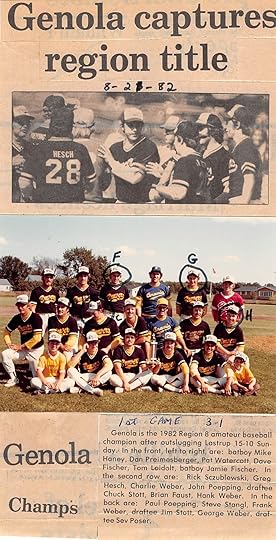
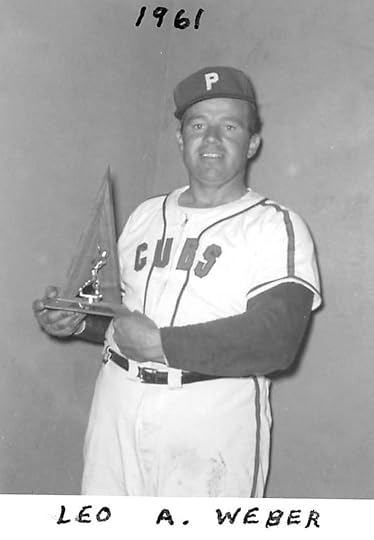
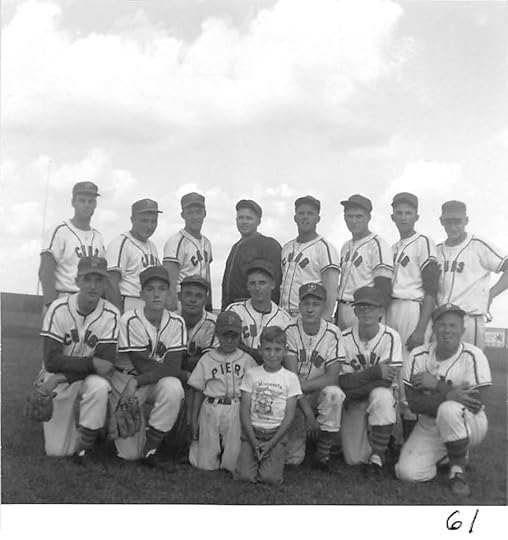
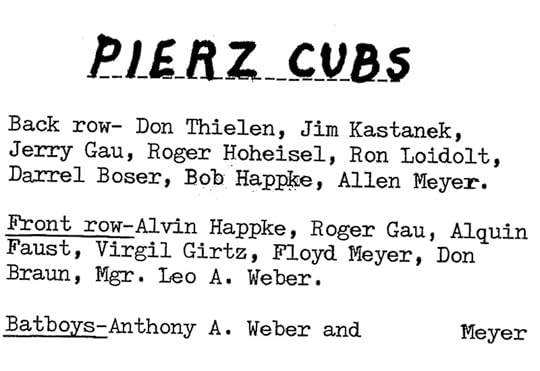
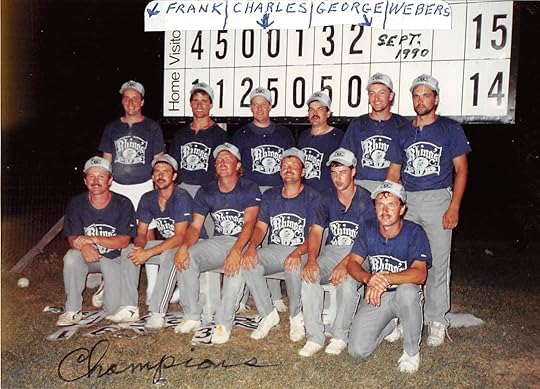 I had a blast playing on this Rhino’s Pub team as it was a group of men with many tales to tell. The after game stories were even better than the games. Back row: Frank Weber, Steve Athman, Charlie Weber, Tim Watercott, George Weber, Jeff LeBlanc Front row: Tom Otremba, Tom Loidolt, Rick Sczeublewski, Pat Watercott, Scott Boser, Brian Faust. Dave Fischer was also on this team.
I had a blast playing on this Rhino’s Pub team as it was a group of men with many tales to tell. The after game stories were even better than the games. Back row: Frank Weber, Steve Athman, Charlie Weber, Tim Watercott, George Weber, Jeff LeBlanc Front row: Tom Otremba, Tom Loidolt, Rick Sczeublewski, Pat Watercott, Scott Boser, Brian Faust. Dave Fischer was also on this team. 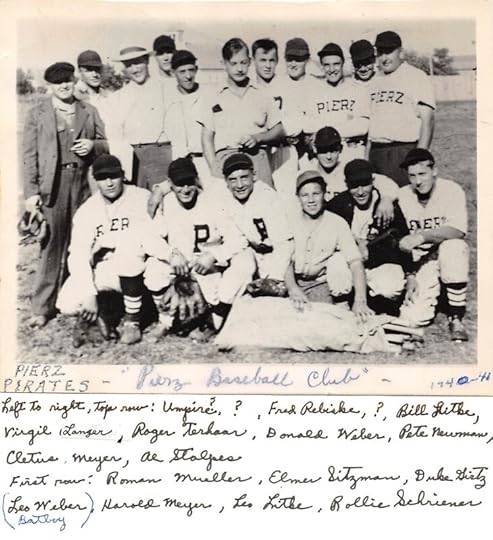
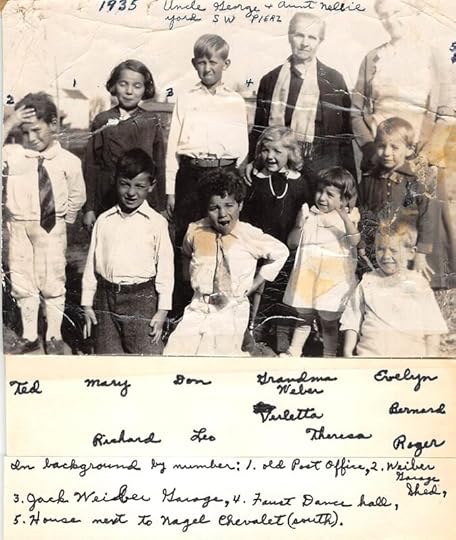
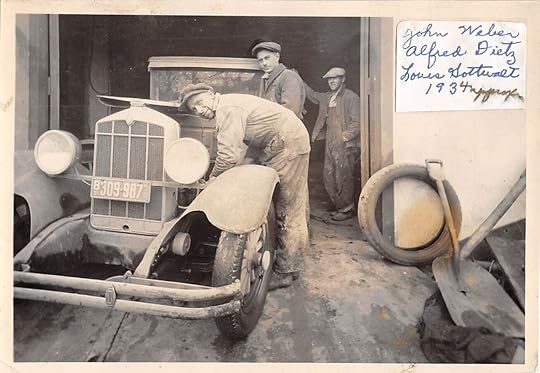
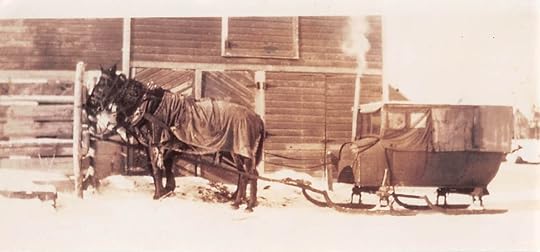 In my parents’ generation families often cut across fields in the horse drawn sleigh in the winter to visit. Some even had wood heaters. Unfortunately, Rosetta Kapsner’s family had the open sleigh (like the Jingle Bells song) and that would get quite cold.
In my parents’ generation families often cut across fields in the horse drawn sleigh in the winter to visit. Some even had wood heaters. Unfortunately, Rosetta Kapsner’s family had the open sleigh (like the Jingle Bells song) and that would get quite cold.  Shane had curly hair like my dad, Leo, when he was younger, but it became less curly as an adult. Leo’s grandson, Albert Leo Greene, as a child had the closest facial expressions to Leo.
Shane had curly hair like my dad, Leo, when he was younger, but it became less curly as an adult. Leo’s grandson, Albert Leo Greene, as a child had the closest facial expressions to Leo. 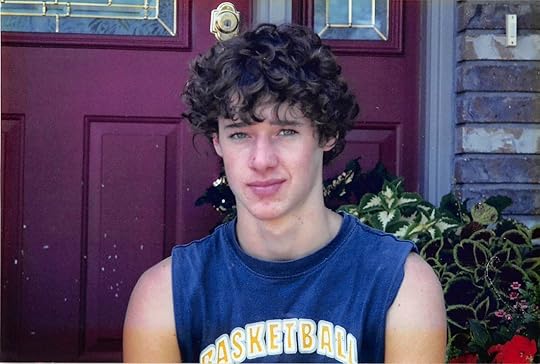 Shane in 10th grade
Shane in 10th grade 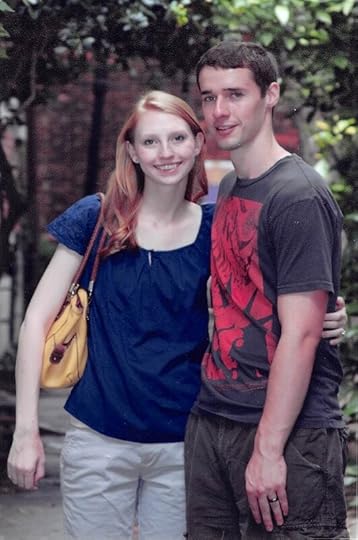 Shane and Rachael Weber, 2010
Shane and Rachael Weber, 2010 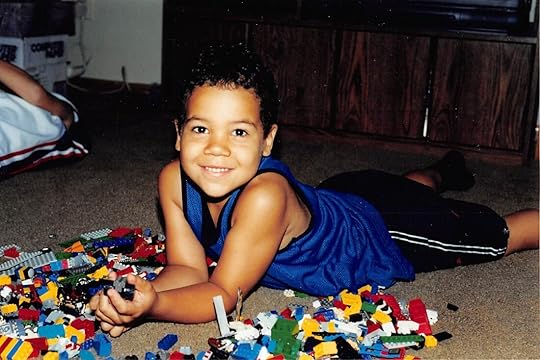 Albert Leo Greene (Dorothy and Albert Greene’s son)
Albert Leo Greene (Dorothy and Albert Greene’s son)  The Pierz girls softball program has become impressive. This is Jada Porter driving a hit.
The Pierz girls softball program has become impressive. This is Jada Porter driving a hit. 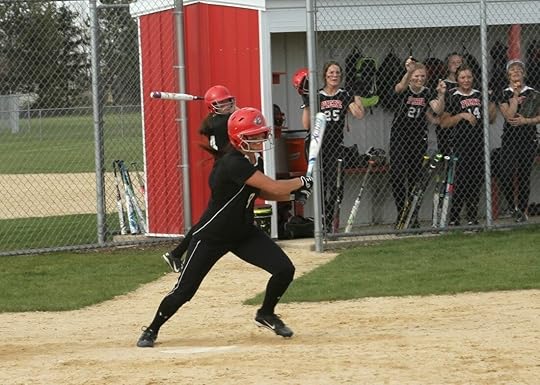 Hannah Kahl
Hannah Kahl 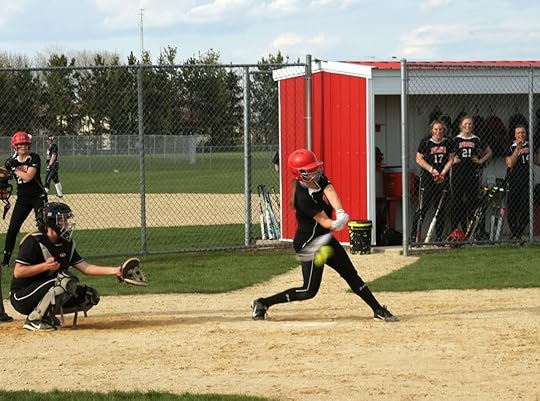 Breanna Meyer
Breanna Meyer  Claire Reardon
Claire Reardon 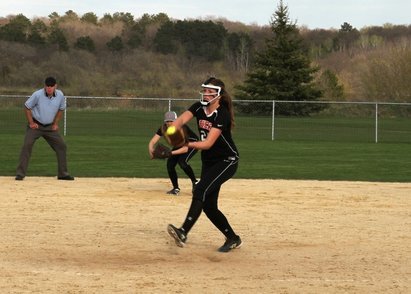 Pierz pitching ace, Brittany Boser
Pierz pitching ace, Brittany Boser
I was a young child at the time, but my older siblings share that the message in the community at the time was “Don’t talk about it.” My older sister was friends with Linda’s sister and they never spoke of it. A change occurred in rural Minnesota in the 1960’s. In the 1950’s many teenagers still stayed around and worked in the communities they were raised in. But in the 60’s high school graduates left to larger communities and parents feared what would happen when their innocent Christian children were exposed to the dangers of the world. It would have helped everyone to have talked about it and I think it’s a disservice to Linda to not talk about her life.
The irony is that even though people had the perception that the world was safer back then, it wasn’t. The homicide rate in 1969 was almost double what it is today in the U.S. (It’s just that people didn’t talk about it.) In 2014, the homicide rate was lower than it’s been in 50 years and even though some cities experienced increases in 2016, those cities aren’t near as dangerous as they were in the 1980’s and 1990’s.
Today we’ve informed everyone better of the dangers, but also scared the hell out of everyone. Parents have become content with the kids staying inside. I drive through towns in the middle of summer and sometimes see no children playing outside. People need to form a sense of community, no matter where they live, and look out for each other. When our kids were little, Brenda and I played baseball (using a tennis ball) with Nicolette, Shane and Preston every summer night. Brenda played in boys little league when she was younger. They all got good at it, but none ultimately played high school ball. They trained hard for fall and winter sports, so they all ended up in track as it fit easier with their training schedules. It was a fun family event, as baseball gives you the opportunity to talk while playing.
Let’s talk about baseball, while the Twins are still in 1st place. Baseball has always been huge in the Pierz area and there are many stories and legends. When the Brainerd paper had an article expressing concern that Brainerd was splitting their talent into 2 teams, people in the Pierz area (a town 1/16th size of Brainerd) laughed as Pierz had 5 amateur baseball teams at the time. Those teams included the Harding (Supersonics and Dinosaurs), Shady Brook Broncos, Lastrup (Lakers and Bulldogs), Center Valley, Pierz (Pirates, Cubs, Dolphins, Brewers, Bulldogs), Buckman (Bees, Bucs, Billy Goats), Genola Brewers, Daggett Brook and there even was a team that played in the area at one time called SLLGC (South Long Lake Gun Club). We played on one field that sloped so much you could only see the left fielder’s head.
The old-timers tell stories about the variety of great players who played some with the Pierz Pirates, including Leo Litke, Harold Meyer, Al Boser, Pete Newman, Rollie Schriener, Roger Terhaar, Art Preimesburger, Elmer Sitzman, Roger Hoheisel, and Lenny Pohlkamp, along with stars from other local teams like Louie Boser and Marvin Sitzman (Center Valley), Roman Miller (Buckman), Dewey Girtz, Cliff Meyer, and Blaise Boser (Genola Brewers). My dad, Leo Weber, was proud of having coached the Pierz Cubs to a league championship, back when the Pierz Pirates were the powerhouse team. The story is that catcher Tom Meyer kept a round steak in his mit to soften the blow from hard throwing hurlers.
In my time there were some great pitchers like Sev Poser (Pierz), Duane Paulson (Lastrup), Rick Sczublewski (Pierz), Larry Litke (Shady Brook), Charlie Weber (Pierz), Danny Litke (Harding), Billy Pohlkamp (Buckman),Tony Veith (Fort Ripley), Chuck Stott (Onamia), Dean Rocheleau (Lastrup and Pierz), and more recently Dan Rocheleau (Lastrup and Harding), Scott Gieger (Buckman) and Chad Weiss (Pierz and Lastrup). There were also guys who were a threat to knock it out of the park every time they stepped to the plate like: Jerry Pohlkamp, Jerry Van Kuren, Tony Veith, Bobby Britz, Bob Lochner, Jim Stott, Ron Litke, Mike Poepping, Clyde Athman, and more recently Steve Athman, Dave Rocheleau, Scott Boser, and Jason Sadlosky. (Bobby Britz—now in his mid-60’s—caught a double header for an amateur baseball team in Shakopee last summer.)
There were some very impressive teams. The Lastrup Lakers went to state 5 years in a row with all Lastrup players (a town of 100). The 1999 Buckman Billy Goats were state champions and Scott Boser was the state tournament MVP. The Lastrup Lakers have recently had a series of impressive state tournament runs. The Lastrup/Shady Brook rivalry led to fist fights with fans. When I played with the Pierz Brewers we played the Harding Super Sonics every year on Memorial weekend. People camped out and partied on the baseball field after the game in an event called “The Derelict Convention.” Notoriously tight Victor Malinoski used to fly his airplane over during the game (which I’m sure didn’t meet legal flight standards). The engine would shut off, the plane would drop, but he would eventually get it started again and resume on his way. While observing this craziness during a game, opponent Paul Froncak commented to me, “He’s so tight he looks over his glasses instead of through them, so he doesn’t wear them out.”
The longest game in the history of baseball was played by 2 Pierz teams on July 23, 2005. The Lastrup Lakers beat the Pierz Brewers 1-0 in 28 innings. Jason Sadlosky pitched the first 14 innings (193 pitches) for Pierz. Danny Saehr pitched 14 innings in relief for Lastrup. Reggie Litke caught the first 25 innings, and then came on in relief to get the win. There was a strong wind blowing straight in from center field the entire game making it difficult for anyone to generate an extra base hit. Nicolette and I were at the game for the first 26 innings, but Nicolette was teaching tennis lessons at the time so we needed to leave.
There was a time when towns would pay pitchers to throw for them. Bud Grant (Minnesota Vikings) had pitched for Pierz and Whitey Skoog (Minnesota Lakers) pitched for Little Falls. Along with Scott Boser, Little Falls residents Rich Weigel and Bob Fenske were also former state tournament MVP’s. There were some great nicknames like Kevin “the Blade” Gilbride and Bob “Banana Tanana” Litke. Most nicknames only lasted a game or 2. I remember referring to an outfielder, who managed to get hit in the groin twice in the same game by misjudged fly balls, as “ET” (the extra testicle). There were also some wonderful headlines like “Sonic Boom Levels Buckman,” written after Paul Froncak hit an extra inning homerun to lead the Harding Supersonics over the Buckman Bucs, 1-0.
I would be remiss if I did not speak of Thursday night women’s softball in Pierz, which at one point featured 12 teams and 2 leagues. Genola Bar, with Diane (Block) Scott, Trudee Preimesburger, Cathy (Trafas) Poepping, Cheri Stang, and Joy (Meyer) Leidenfrost won the league 8 years running. Great pitchers like Carol (Block) Luberts were important in unlimited arc leagues. There were some outstanding players, including Linda (Block) Pohlkamp (Lastrup and J& M Bar), Donna (Pohlkamp) Janson, Lisa (Kelzenberg) Meyer and Renee (Kelzenberg) Weber from Toby’s Tavern, Gladys Fischer (Lastrup), Eileen (Fischer) Pohlkamp (J & M Bar), Debbie (Hohiesel) Gall and Rosie (Hohiesel) Talberg (Red Rooster), Denise (Weiss) Athman and Bonnie Litke (Harding), Sandy Sullivan, Ann Gross and Shirley Andrea (Good Time Charlies).
I know I’ve missed many great players, both women and men, and I apologize for that. The Pierz men’s softball league was a Friday night event featuring 14 teams from the Pierz school district at one point. Stylist Marie (Stuckmeyer) Schafer would cut a fan’s hair during the game and everyone watched the series of games under the lights in Genola. Rhino’s Pub in Genola was where many teams went, but every pub in the area was packed by the night’s end. One of the baseball pictures below features Mike Haney as a bat boy. Mike died at age 31 from cancer. Mike has a special place in my heart as he was a super kind person which is far more significant than any records or wins. Mike knew baseball and he played on great softball team called Bootleggers. Robert Van Kuren, great hitter and great person, also died too young. Robert was one of those young men you can only remember with a smile. I want to thank Dave Fischer, Paul Froncak, Rick Grammond, Jim Fischer and John Hellie for their many contributions to amateur baseball.
Quotes:
I once asked Paul Froncak, “How do you get out of a hitting slump?”
He smiled at me and said, “I don’t know Frank, I’ve never been out of one.”
When it was suggested to Mickey Rivers that his teammate Reggie Jackson had an IQ of 165, Mickey asked, “Is that out of a thousand?”
I have to end with a Yogi Berra story. After the baseball season had ended, Yogi had raked some leaves at his cabin and was burning them. The fire got out of control so he called the fire department. When they responded, “Okay, how do we get there?”, he asked, “Don’t you still have those big red trucks?”
Thanks for listening,
Frank Weber Here are some pictures I borrowed from Leo and Rosetta’s photo album.




 I had a blast playing on this Rhino’s Pub team as it was a group of men with many tales to tell. The after game stories were even better than the games. Back row: Frank Weber, Steve Athman, Charlie Weber, Tim Watercott, George Weber, Jeff LeBlanc Front row: Tom Otremba, Tom Loidolt, Rick Sczeublewski, Pat Watercott, Scott Boser, Brian Faust. Dave Fischer was also on this team.
I had a blast playing on this Rhino’s Pub team as it was a group of men with many tales to tell. The after game stories were even better than the games. Back row: Frank Weber, Steve Athman, Charlie Weber, Tim Watercott, George Weber, Jeff LeBlanc Front row: Tom Otremba, Tom Loidolt, Rick Sczeublewski, Pat Watercott, Scott Boser, Brian Faust. Dave Fischer was also on this team. 


 In my parents’ generation families often cut across fields in the horse drawn sleigh in the winter to visit. Some even had wood heaters. Unfortunately, Rosetta Kapsner’s family had the open sleigh (like the Jingle Bells song) and that would get quite cold.
In my parents’ generation families often cut across fields in the horse drawn sleigh in the winter to visit. Some even had wood heaters. Unfortunately, Rosetta Kapsner’s family had the open sleigh (like the Jingle Bells song) and that would get quite cold.  Shane had curly hair like my dad, Leo, when he was younger, but it became less curly as an adult. Leo’s grandson, Albert Leo Greene, as a child had the closest facial expressions to Leo.
Shane had curly hair like my dad, Leo, when he was younger, but it became less curly as an adult. Leo’s grandson, Albert Leo Greene, as a child had the closest facial expressions to Leo.  Shane in 10th grade
Shane in 10th grade  Shane and Rachael Weber, 2010
Shane and Rachael Weber, 2010  Albert Leo Greene (Dorothy and Albert Greene’s son)
Albert Leo Greene (Dorothy and Albert Greene’s son)  The Pierz girls softball program has become impressive. This is Jada Porter driving a hit.
The Pierz girls softball program has become impressive. This is Jada Porter driving a hit.  Hannah Kahl
Hannah Kahl  Breanna Meyer
Breanna Meyer  Claire Reardon
Claire Reardon  Pierz pitching ace, Brittany Boser
Pierz pitching ace, Brittany Boser
Published on May 29, 2017 06:17
May 21, 2017
John and Elizabeth Weber, Red’s Auto, Jesse James and Cole Younger (in-laws and outlaws)
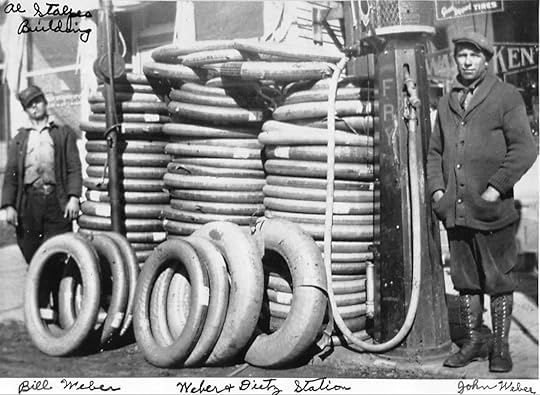 My grandfather, John Weber, lived with his family in Nebraska, where they struggled financially. John moved to Minnesota to farm, but his first wife died giving birth to my uncle John Francis Weber. His second wife, Elizabeth Dietz (my grandmother), farmed by New Ulm. The Dietz house was ahead of its time, with gas lighting (before electricity), and a large water tank in the attic that allowed them to run water through faucets in the house. They had a smokehouse in the basement where they processed their meat. My aunt Mary Konen worked on their New Ulm farm from 1st grade on during the summer.
My grandfather, John Weber, lived with his family in Nebraska, where they struggled financially. John moved to Minnesota to farm, but his first wife died giving birth to my uncle John Francis Weber. His second wife, Elizabeth Dietz (my grandmother), farmed by New Ulm. The Dietz house was ahead of its time, with gas lighting (before electricity), and a large water tank in the attic that allowed them to run water through faucets in the house. They had a smokehouse in the basement where they processed their meat. My aunt Mary Konen worked on their New Ulm farm from 1st grade on during the summer. My grandparents John Weber and Elizabeth (Dietz) Weber built Weber-Dietz Battery and Tire Repair. It later became Weber’s Service Station and John eventually sold it to his sons, Leo and Ted Weber. When my dad, Leo, was married in 1952, he felt there wasn’t enough money for two families to survive at the garage so he drove a Gluek Beer truck and worked at Gottwalt Lumber until fall, and then moved with Rosetta (my mother) to Hawthorne, Nevada, where he worked road construction and then on public housing on a military base. My oldest three siblings, Anthony, Barb and Charlie were all born in Nevada.
Back in Pierz, the service station became Weber’s Texaco. Ted Weber was married to Arlene Suess. Arlene’s sister, Marie, was married to Elmer Sitzman, who owned a bar in Buckman called Marie's Lunch. Elmer was a great baseball player who was known for stealing bases, playing center field well and being a great hitter. Elmer and Marie are Red Sitzman’s parents. Weber’s Texaco was sold to Red and Pam Sitzman and then became Red’s Auto. Pam is Brenda’s sister. (Rod and Janet Brixius’ two children.) Pam runs the financial end of the business as Brenda runs the financial aspects of our business (CORE Professional Services). Ted kept the business small as he didn’t purchase anything he couldn’t pay cash for. Pam and Red made Red’s Auto into the larger successful business it is today. My grandmother, Elizabeth Weber, would eventually be the Grand Marshall for the Pierz Octoberfest. She was 60 when I was born, and lived until I was 39. At her 99th birthday she told me, “I used to want to live to be a hundred, but now I’m thinking 99 is long enough. She was strong in her faith and gave me some great insights. Grandma Elizabeth died at 99. Elizabeth made an aqueduct system which ran all of the rain that came off her roof into rain barrels. She used the water on her garden and had an amazing garden.
Before my parents were married, mom, Rosetta Kapsner, taught in a one-room school 8 miles east of Buckman called District 113. She had 32 students to teach in 7 grades. The school initially didn’t have electricity (in 1950), but the parents made sure they had electricity by the Christmas show as they wanted the show to be at night. There was no running water, but there was a pump outside. It was on a dirt road and cars were frequently stuck coming and going. Rosetta lived with Mabel Young. Clarence and Mabel Young came from Illinois with the last name “Younger”, but changed their name as they no longer wanted to be associated with their cousins Cole Younger and Cole’s brothers Jim, John and Bob (Jesse James cohorts).
Cole Younger and his brothers were “guerrilla fighters” for the Confederate army during the Civil War. His father was pro-union, but was shot dead by a union fighter anyway. Cole spent the rest of his life seeking revenge against the union for this. Cole fought with a group called the “Bushwhackers” who had a special hatred for the “Red Leg” of the union troops who fought ruthlessly in his home state of Missouri. The Red Legs used execution, arson and plundering in an effort to demoralize the confederacy. Cole rode with Frank James and William Clarke Quantrill in a retaliation raid in Lawrence, Kansas, known as the “Massacre in Lawrence,” on August 21, 1863 in which 200 citizens were killed and the town was looted and burned. This wasn’t a battle, it was an execution of all the men and boys due to the town’s alliance with the Union. Cole left for California during the Civil war, claiming he went to recruit for the Confederacy. Jesse and Frank James joined the Younger brothers and were involved in hold-ups of stage coaches, banks and trains in Missouri, Kentucky, Kansas and West Virginia. They were known as the James-Younger gang. The Iron Mountain Railroad hired the Pinkerton Detective Agency to arrest the gang. John Younger was shot dead, and shortly after, one of the investigators was found dead alongside a rural road. The Pinkerton Agency burned down the James home, killing Jesse’s 9-year-old half-brother and wounding his mother, resulting in one of her arms being removed. A neighbor had tipped off the Pinkerton agency. This neighbor was found dead, and it is believed Jesse James killed him.
Its rumored Cole Younger fathered bandit Belle Starr’s first child (Belle was also from Missouri and they did have a relationship). Belle had a history of bandit boyfriends (2 husbands shot dead) before she was killed. (It was believed she was shot by a neighbor twice in the back, as she and her 3rd husband had an ongoing feud with him. No one was arrested.)
The down fall of the James-Younger gang began in Northfield, Minnesota, when they attempted to rob the Northfield bank on September 7, 1876. They selected this bank because they believed it was owned by a Union General who fought in Missouri. (They were mistaken.) It was the opening day of deer hunting in Minnesota. Townspeople sent up an alarm when they saw strangers standing outside the bank, and a shoot-out ensued. The outlaws killed 2 townspeople (including a cashier), but fled with nothing. The Northfield citizens killed 2 gang members and badly wounded Bob Younger. The townspeople formed a posse and pursued the gang. Another shoot-out occurred by the Watonwan river close to Madelia, Minnesota. A gang member was killed and Cole, Bob and Jim Younger were all badly wounded and captured. The James brothers, Jesse and Frank, escaped and made it back to Missouri. Jesse James was later killed by a member of his gang, Robert Ford, who hoped to collect a reward for the killing. Bob Younger died in prison in Stillwater from tuberculosis. Cole and Jim Younger were paroled in 1901 with the help of the prison warden. Jim committed suicide in a St. Paul hotel. Cole declared he had become a Christian and repented, although he only took responsibility for the one robbery he was caught attempting. After Frank James served out his prison time, Cole and Frank toured the south in a wild west show called The Cole Younger and Frank James Wild West Company. Cole Younger died on March 21, 1916.
Jesse James' father left to pan for gold in California when Jesse was 3. His stepdad and mother were slave owners. Jesse married his first cousin, Zerelda Mimms. She died in poverty after Jesse’s death. There weren’t a lot of people who wanted to help someone who lived off of stolen money most of her life. The Ford brothers weren’t trustworthy, but it’s believed Jesse James kept them around because he was interested in their sister. Robert Ford and his brother Charles Ford were recruited by Jesse James after the Younger brothers went to prison. Robert shot an unarmed Jesse in the back of the head, while Jesse was adjusting a picture in this living room. When Zerelda entered the room, Robert denied having shot him. However he immediately left and sought out the reward. The Ford brothers were indicted for 1st degree murder, plead guilty, were sentenced to be hanged, and pardoned by the Govenor, all in the same day. Charles Ford became addicted to Morphine and committed suicide. Robert Ford moved to Las Vegas and opened a tent bar. His life ended when a man entered and said, “Hi Bob,” before blasting him away with a shot gun. It doesn’t surprise me that the Youngers who moved to Minnesota wanted nothing to do with their cousins. Like the James brothers, they were scary people, which in my opinion is the easiest, and least respectful, type of people to be. There is no honor among criminals and they didn’t have happy endings.
Getting back to Red’s Auto, they have already sold 50 copies of Murder Book at the station for me! Thank you!
Quotes:
I don’t believe there’s intelligent life on other planets. Why should they be any different than ours? Bob Monkhouse
Brenda and I watched a King of Queens episode and I enjoyed Doug’s (Kevin James) interpretation of a wedding vow. Carrie was asking Doug if her father could live with him if she died. Doug told her, “Sorry, but it’s in the rules. He can’t. Remember we said, ’til death do us part. That means if you die, we part, so your father can’t live with me.”
Brenda and I went to see Steve Martin and Martin Short at the Orpheum this past week. Steve Martin commented on his jokes: “I think of my jokes like my children. Half of them aren’t mine.”
Thanks for listening,
Frank
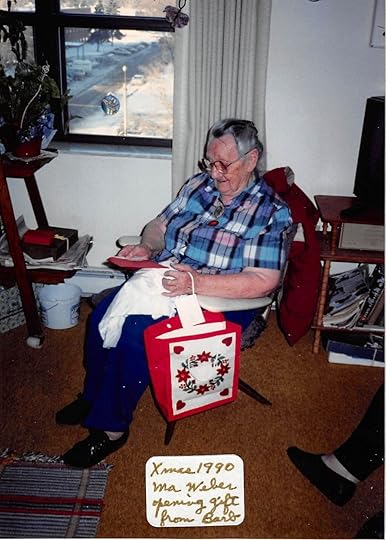 Grandma Elizabeth (Dietz) Weber
Grandma Elizabeth (Dietz) Weber 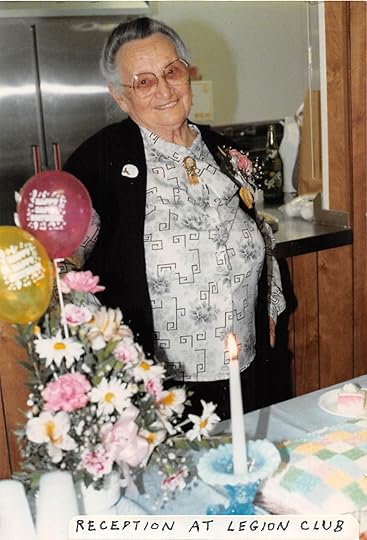 Grandma Weber, 90th Birthday
Grandma Weber, 90th Birthday 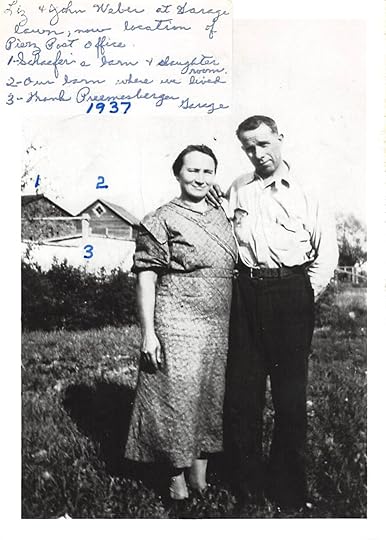
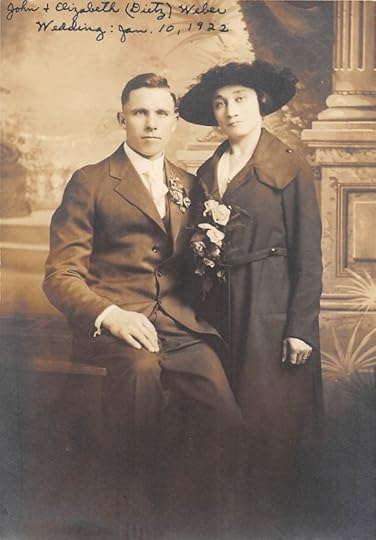
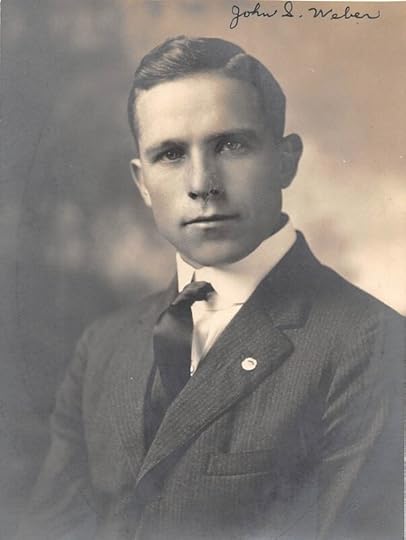
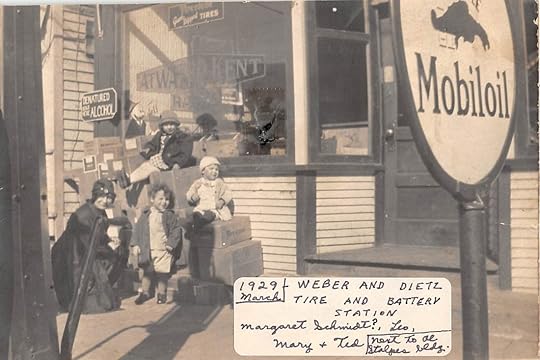 My dad, Leo, is the boy with the curly hair Since it was a cold gloomy weekend we decided to visit the Science Museum in St. Paul and attend the Syttende Mai celebration at Mindekerken to watch Preston conduct the Crosstown Community Band from south Minneapolis.
My dad, Leo, is the boy with the curly hair Since it was a cold gloomy weekend we decided to visit the Science Museum in St. Paul and attend the Syttende Mai celebration at Mindekerken to watch Preston conduct the Crosstown Community Band from south Minneapolis. 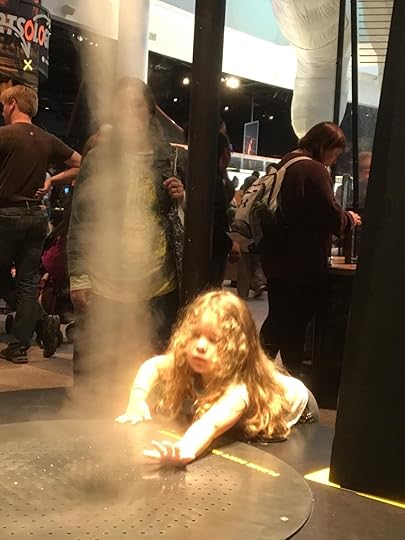 Kaycee at the Science Museum
Kaycee at the Science Museum 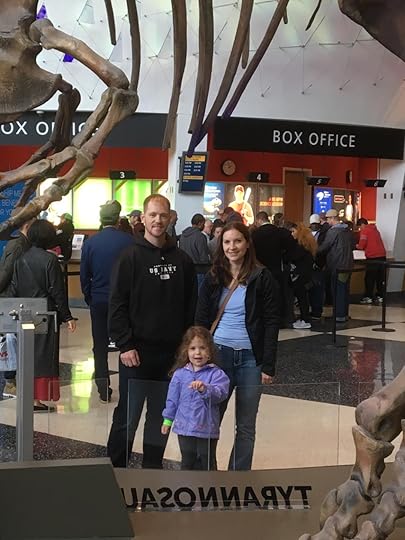 Branden, Kaycee and Nicolette Deal
Branden, Kaycee and Nicolette Deal 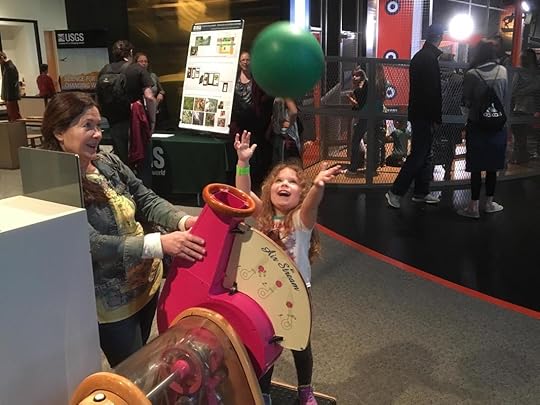 Brenda Weber and Kaycee Deal
Brenda Weber and Kaycee Deal 
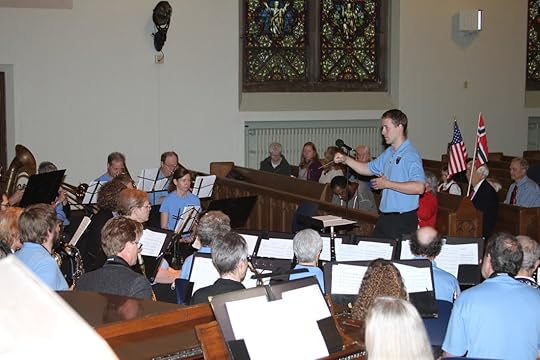
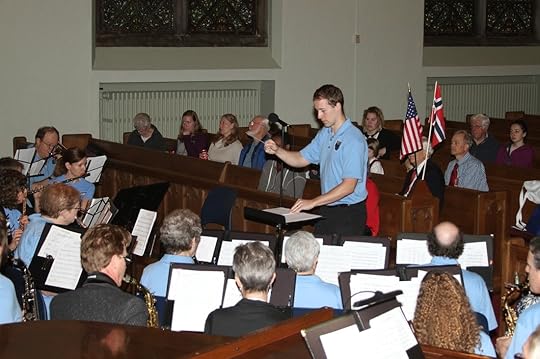
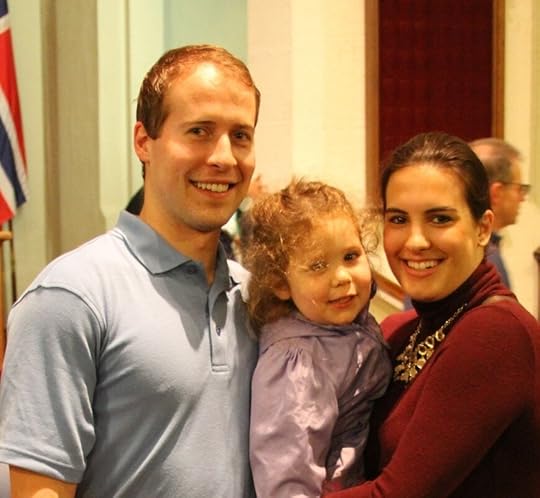 Preston, Kaycee and Olivia
Preston, Kaycee and Olivia 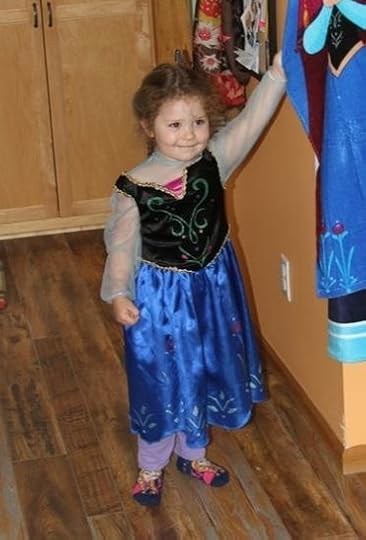 Kaycee--notice not only the Anna dress, but Anna socks also
Kaycee--notice not only the Anna dress, but Anna socks also
Published on May 21, 2017 09:14
May 16, 2017
Justified shootings, East St. Louis and Charlie Parker
Thank you to everyone who has supported the success of Murder Book. People have been so amazingly kind. If you don’t mind, please write a review on Amazon, as they begin advertising the book after so many positive reviews.
Last year, East St. Louis, Illinois was the most dangerous city in the U.S. Unfortunately, the most dangerous cities also have histories of racial injustice which amplifies the rage. In 1917, the packing plants in East St. Louis hired black workers to replace striking white workers. White workers rioted, setting fire to homes housing Black Americans and opened gun fire on them when they ran out. The exact number of Black Americans killed is unknown, but it’s estimated between 50 and 450. The police locked themselves in the station and refused to answer calls for help. More than 6,000 black Americans left the city following the riots. A sad American tragedy. Fortunately, there are fewer of these tragedies today. Jazz musician Miles Davis was from East St. Louis, which I will discuss further at the end. While some cities are becoming more violent, most of America is less violent than it was 30 years ago. If you eliminated the 3 most violent cities, the rest of America is no more violent than any other civilized country. To give you an idea of how violent some neighborhoods are, residents of South Halsted in Chicago had a 1 in 7 chance of being a victim of a violent crime during just last year.
No sane person, of any race, wants to see another citizen or an officer shot. Most people hesitate to even talk about it for fear of generating hatred from others. I’m going to talk about it, because I like to understand social issues and we have to talk about it to find solutions.
609.66 is the police code for the use of deadly force. Officers are allowed to use deadly force:
To protect the officer or another person from deadly harm.To prevent escape by a person who may cause death or bodily harm. (For example: Let’s say an officer has just arrested serial killer Ted Bundy, and on the way to the police station an accident occurs and Ted escapes. At that point the officer is allowed to use deadly force on an individual who is running away because to not do so would likely result in the death of another person.)
Police officer shootings are evaluated on the Graham vs. Connor ruling, which asks, “What would a reasonable person who is trained do?”
Here are 3 things to consider (followed by an explanation):
Officers are allowed to shoot, even if they are not fired upon.Officers are not required to shoot to wound.Officers are not trained to shoot to kill.
The first person to fire in most violent encounters is the one who survives. Police officers typically hit their target 15% of the time they shoot (15% is the national average). Handguns are not very accurate, and keep in mind they are shooting in high stress situations with only a fraction of a second to make decisions. It takes about ½ a second to recognize a threat, another ½ a second to respond, and ½ second to tell your brain to stop shooting after you’ve started. (This has been tested at target ranges.) If someone threatens you and you fire back, and then they turn to run, you are likely shooting at their back before your brain processes that you can stop shooting. Officers shoot to end a threat. 85% of people shot with a handgun survive.
Between 2009 and 2012 in the U.S., police officers shot and killed a suspect an average of 372 times a year. During that same period, there were 280 justified homicides by citizens. Think about this. Just about every day an officer shoots and kills someone, and a citizen also does, without legal charges. In 2011, 177 police officers were killed in the U.S. Violent situations are more difficult for police officers than most people realize. For example, the officer typically has a very generic description of the suspect, such as, “Young man of average build in a t-shirt and jeans, of _______ race.” The officer may run into 5 people who meet the description close to the scene. Officers are typically outnumbered when they arrive and many suspects will not go peacefully.
The Ferguson riots in 2014 did $1.2 billion in damage, compared to $1 billion in damage during the Los Angeles riots in 1992. I found it interesting that everyone saw the Walgreen's being ransacked in Ferguson on national television, which gave the impression of large scale drug looting. However, Walgreen's was the only drug store that was looted. Most of the businesses that were damaged (40 total) were small restaurants. The enrollment in law enforcement programs has dropped 60% since the Ferguson riots, which colleges refer to as “the Ferguson effect.”
At CORE Professional Services, PA, we complete psychological assessments on individuals entering law enforcement. Most are decent people, with the majority being white males, raised in rural Minnesota, who enter the field to make the world better. Unfortunately, they are most likely to get their first employment in an inner-city, high crime area, because this is where you find the highest turnover of police officers.
Statistics:
Twice as many white people as African Americans are killed by police officers. (White people constitute 62% of the population and 49% of those killed by police officers.) African Americans account for 24% of people killed by police officers, even though they are only 13% of the population.
Police officers note that some races are shot more often because those races are more involved in violent behavior. For example: The latest data for Chicago indicates: 71% of murderers in Chicago are black, 25% of murderers are Hispanic and 4% of murderers are white. There are more white people in Chicago than any other race. 45% of the city is white, 32% of the city is black and 28% of the city is Hispanic. 75% of murder victims in Chicago are black, 19% are Hispanic and 5% are white. Both Black and white citizens are murdered more than they murder. 90% of the murder victims were male.
So what do I conclude?
We are doing a much better job educating women than we are raising men. If you look at the U.S. population over age 65, there are twice as many women as men. It’s not because old women outlive old men (they do not). It’s because so many young men die from homicide, suicide and accidents.We need to change the environment of some inner cities. Most inner city murders involve young black men killing other young black men. There needs to be more legitimate opportunities for people coming out of poverty. 1 out of every 4 girls living in poverty has a child as a teenager. The ratio is the same for white, black and Hispanic girls. The reason some races have more teen mothers is simply because they have a larger percentage of their population living in poverty. People with more opportunities have children older, more often in the context of marriage. We would benefit from encouraging more inner-city youth to consider careers in law enforcement. A small % of every occupation and race exhibits behavior that no sane person can justify. This includes police officers, teachers, ministers, students, white, black, Hispanic, Atheist, Christian, Muslim, etc. We have all seen ridiculous attacks on black citizens and there are even more ridiculous attacks on police officers (Keep in mind, they are confidential and not played on the news every night. I have seen them during the course of forensic assessments.)People need to calm down and treat others with respect. I promise to do my best. We are society. If we want society to be better, we can start by treating each other better. There may have been something written about this on a stone tablet… before tweeting.
Miles Davis played in a band with Charlie Parker (who is always referred to as “Bird”), Dizzy Gillespe, Felonious Monk, and Max Roach (who Bruce Pederson taught me were all legends). They played regularly on 52nd street in New York City and recorded and album together, which I’d like to find. They were an interesting combination of intelligent and creative, but very different men, who made it work out of their respect for one another. Miles feels that Charlie Parker was the best saxophone player to ever play. Charlie Parker is said to have practiced saxophone 15 hours a day. Miles Davis shared how Charlie Parker played like no one else and presented a new performance every time. Unfortunately, he struggled with heroin addiction, often missed gigs and died at the age of 34. Miles knew “Bird” from Illinois, so when he arrived in New York (attending Julliard) he searched clubs for almost 2 years before he finally tracked Charlie Parker down. Miles eventually dropped out of Julliard, as he felt the school was racist, and the education couldn’t match what he was learning with his band. I like the way Miles Davis studied music and researched classical music to improve his understanding of his work. Charlie Parker, like legendary blues singer Billie Holiday, died trying to wean himself off of heroin. When you stop using heroin you feel like you have a terrible flu, and people in the entertainment industry try to take enough to keep performing. Unfortunately, when heroin is bought on the street you never really know the composition. This is why methadone treatment programs can be very helpful.
Quotes:
No matter how old you are, if a little kid hands you a toy phone, you answer it. Dave Chappelle
I like it when people say, “Camping is a tradition in my family. Well, camping was a tradition in everyone’s family, before we invented houses.” Jim Gaffigan
“If Einstein was so smart, how come people only call you Einstein when you do something stupid.” Brian Regan
“I make no effort to cook anymore. I even get upset when the microwave instructions tell me to stir after 3 minutes. Who do they think I am, Martha Stewart? Why didn’t they stir it before they put it in there.” Brian Regan
Thanks for listening,
Frank
Photos from the opening of Murder Book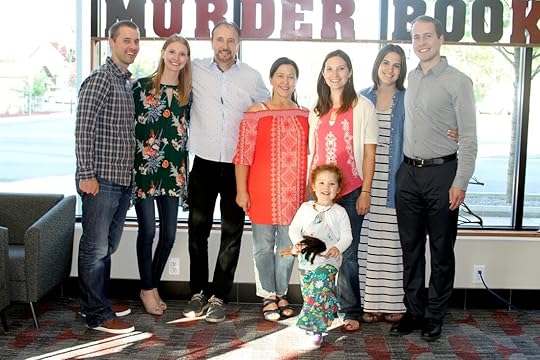
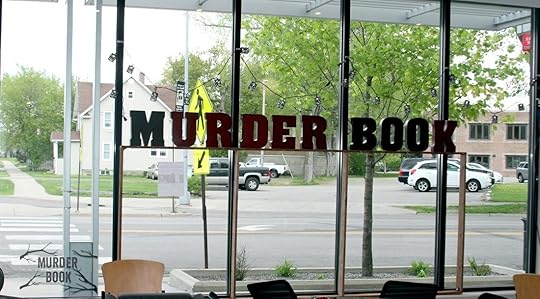
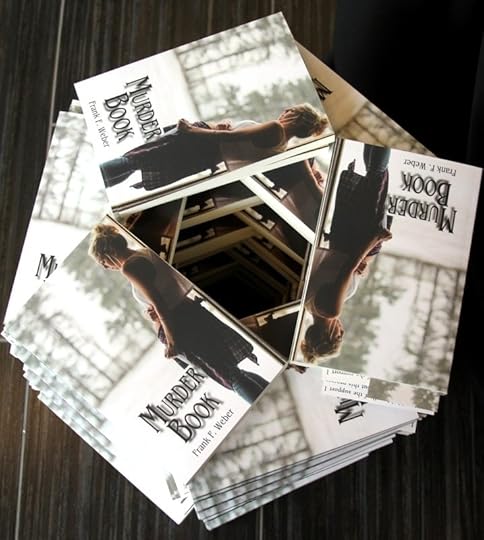
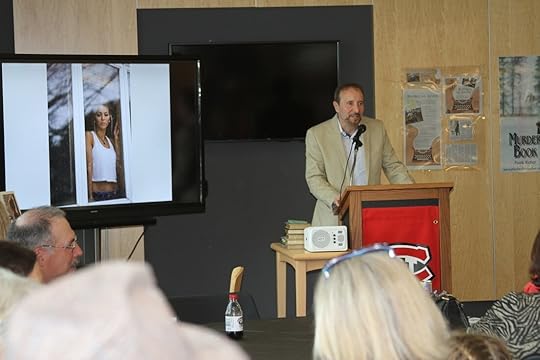
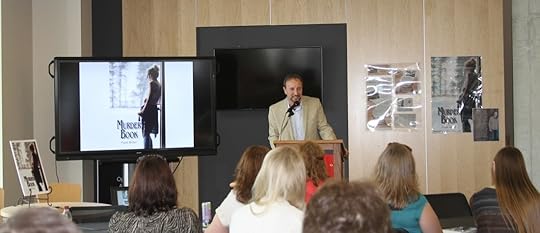
 Mother's Day at the Webers
Mother's Day at the Webers 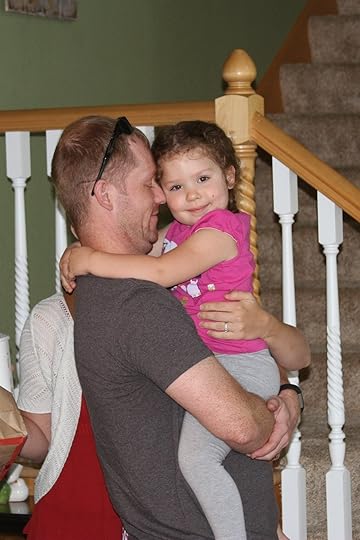 The Deal family is reunited on Mother's Day, as Branden returned to Nicolette and Kaycee after military training.
The Deal family is reunited on Mother's Day, as Branden returned to Nicolette and Kaycee after military training. 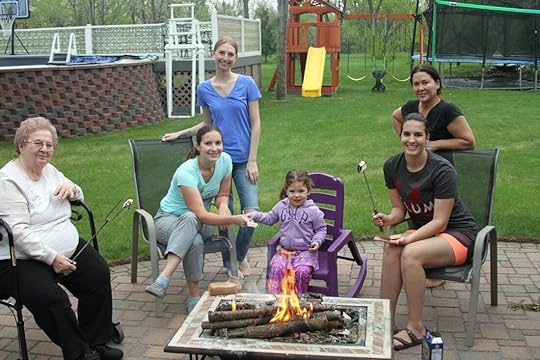
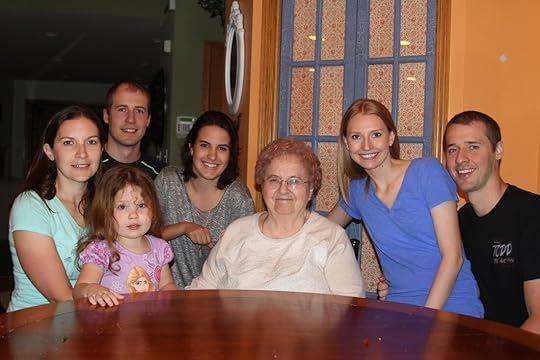
Last year, East St. Louis, Illinois was the most dangerous city in the U.S. Unfortunately, the most dangerous cities also have histories of racial injustice which amplifies the rage. In 1917, the packing plants in East St. Louis hired black workers to replace striking white workers. White workers rioted, setting fire to homes housing Black Americans and opened gun fire on them when they ran out. The exact number of Black Americans killed is unknown, but it’s estimated between 50 and 450. The police locked themselves in the station and refused to answer calls for help. More than 6,000 black Americans left the city following the riots. A sad American tragedy. Fortunately, there are fewer of these tragedies today. Jazz musician Miles Davis was from East St. Louis, which I will discuss further at the end. While some cities are becoming more violent, most of America is less violent than it was 30 years ago. If you eliminated the 3 most violent cities, the rest of America is no more violent than any other civilized country. To give you an idea of how violent some neighborhoods are, residents of South Halsted in Chicago had a 1 in 7 chance of being a victim of a violent crime during just last year.
No sane person, of any race, wants to see another citizen or an officer shot. Most people hesitate to even talk about it for fear of generating hatred from others. I’m going to talk about it, because I like to understand social issues and we have to talk about it to find solutions.
609.66 is the police code for the use of deadly force. Officers are allowed to use deadly force:
To protect the officer or another person from deadly harm.To prevent escape by a person who may cause death or bodily harm. (For example: Let’s say an officer has just arrested serial killer Ted Bundy, and on the way to the police station an accident occurs and Ted escapes. At that point the officer is allowed to use deadly force on an individual who is running away because to not do so would likely result in the death of another person.)
Police officer shootings are evaluated on the Graham vs. Connor ruling, which asks, “What would a reasonable person who is trained do?”
Here are 3 things to consider (followed by an explanation):
Officers are allowed to shoot, even if they are not fired upon.Officers are not required to shoot to wound.Officers are not trained to shoot to kill.
The first person to fire in most violent encounters is the one who survives. Police officers typically hit their target 15% of the time they shoot (15% is the national average). Handguns are not very accurate, and keep in mind they are shooting in high stress situations with only a fraction of a second to make decisions. It takes about ½ a second to recognize a threat, another ½ a second to respond, and ½ second to tell your brain to stop shooting after you’ve started. (This has been tested at target ranges.) If someone threatens you and you fire back, and then they turn to run, you are likely shooting at their back before your brain processes that you can stop shooting. Officers shoot to end a threat. 85% of people shot with a handgun survive.
Between 2009 and 2012 in the U.S., police officers shot and killed a suspect an average of 372 times a year. During that same period, there were 280 justified homicides by citizens. Think about this. Just about every day an officer shoots and kills someone, and a citizen also does, without legal charges. In 2011, 177 police officers were killed in the U.S. Violent situations are more difficult for police officers than most people realize. For example, the officer typically has a very generic description of the suspect, such as, “Young man of average build in a t-shirt and jeans, of _______ race.” The officer may run into 5 people who meet the description close to the scene. Officers are typically outnumbered when they arrive and many suspects will not go peacefully.
The Ferguson riots in 2014 did $1.2 billion in damage, compared to $1 billion in damage during the Los Angeles riots in 1992. I found it interesting that everyone saw the Walgreen's being ransacked in Ferguson on national television, which gave the impression of large scale drug looting. However, Walgreen's was the only drug store that was looted. Most of the businesses that were damaged (40 total) were small restaurants. The enrollment in law enforcement programs has dropped 60% since the Ferguson riots, which colleges refer to as “the Ferguson effect.”
At CORE Professional Services, PA, we complete psychological assessments on individuals entering law enforcement. Most are decent people, with the majority being white males, raised in rural Minnesota, who enter the field to make the world better. Unfortunately, they are most likely to get their first employment in an inner-city, high crime area, because this is where you find the highest turnover of police officers.
Statistics:
Twice as many white people as African Americans are killed by police officers. (White people constitute 62% of the population and 49% of those killed by police officers.) African Americans account for 24% of people killed by police officers, even though they are only 13% of the population.
Police officers note that some races are shot more often because those races are more involved in violent behavior. For example: The latest data for Chicago indicates: 71% of murderers in Chicago are black, 25% of murderers are Hispanic and 4% of murderers are white. There are more white people in Chicago than any other race. 45% of the city is white, 32% of the city is black and 28% of the city is Hispanic. 75% of murder victims in Chicago are black, 19% are Hispanic and 5% are white. Both Black and white citizens are murdered more than they murder. 90% of the murder victims were male.
So what do I conclude?
We are doing a much better job educating women than we are raising men. If you look at the U.S. population over age 65, there are twice as many women as men. It’s not because old women outlive old men (they do not). It’s because so many young men die from homicide, suicide and accidents.We need to change the environment of some inner cities. Most inner city murders involve young black men killing other young black men. There needs to be more legitimate opportunities for people coming out of poverty. 1 out of every 4 girls living in poverty has a child as a teenager. The ratio is the same for white, black and Hispanic girls. The reason some races have more teen mothers is simply because they have a larger percentage of their population living in poverty. People with more opportunities have children older, more often in the context of marriage. We would benefit from encouraging more inner-city youth to consider careers in law enforcement. A small % of every occupation and race exhibits behavior that no sane person can justify. This includes police officers, teachers, ministers, students, white, black, Hispanic, Atheist, Christian, Muslim, etc. We have all seen ridiculous attacks on black citizens and there are even more ridiculous attacks on police officers (Keep in mind, they are confidential and not played on the news every night. I have seen them during the course of forensic assessments.)People need to calm down and treat others with respect. I promise to do my best. We are society. If we want society to be better, we can start by treating each other better. There may have been something written about this on a stone tablet… before tweeting.
Miles Davis played in a band with Charlie Parker (who is always referred to as “Bird”), Dizzy Gillespe, Felonious Monk, and Max Roach (who Bruce Pederson taught me were all legends). They played regularly on 52nd street in New York City and recorded and album together, which I’d like to find. They were an interesting combination of intelligent and creative, but very different men, who made it work out of their respect for one another. Miles feels that Charlie Parker was the best saxophone player to ever play. Charlie Parker is said to have practiced saxophone 15 hours a day. Miles Davis shared how Charlie Parker played like no one else and presented a new performance every time. Unfortunately, he struggled with heroin addiction, often missed gigs and died at the age of 34. Miles knew “Bird” from Illinois, so when he arrived in New York (attending Julliard) he searched clubs for almost 2 years before he finally tracked Charlie Parker down. Miles eventually dropped out of Julliard, as he felt the school was racist, and the education couldn’t match what he was learning with his band. I like the way Miles Davis studied music and researched classical music to improve his understanding of his work. Charlie Parker, like legendary blues singer Billie Holiday, died trying to wean himself off of heroin. When you stop using heroin you feel like you have a terrible flu, and people in the entertainment industry try to take enough to keep performing. Unfortunately, when heroin is bought on the street you never really know the composition. This is why methadone treatment programs can be very helpful.
Quotes:
No matter how old you are, if a little kid hands you a toy phone, you answer it. Dave Chappelle
I like it when people say, “Camping is a tradition in my family. Well, camping was a tradition in everyone’s family, before we invented houses.” Jim Gaffigan
“If Einstein was so smart, how come people only call you Einstein when you do something stupid.” Brian Regan
“I make no effort to cook anymore. I even get upset when the microwave instructions tell me to stir after 3 minutes. Who do they think I am, Martha Stewart? Why didn’t they stir it before they put it in there.” Brian Regan
Thanks for listening,
Frank
Photos from the opening of Murder Book





 Mother's Day at the Webers
Mother's Day at the Webers  The Deal family is reunited on Mother's Day, as Branden returned to Nicolette and Kaycee after military training.
The Deal family is reunited on Mother's Day, as Branden returned to Nicolette and Kaycee after military training. 

Published on May 16, 2017 06:15
May 7, 2017
Mother’s Day and the Murder Book opening on May 10
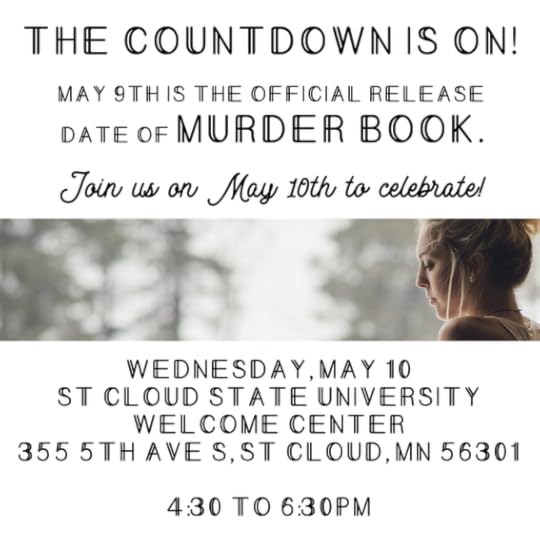 Anna Jarvis started Mother's Day 1908, by holding a memorial for her mother at St Andrew's Church in Grafton, West Virginia. Her mother was as impressive as people get. Ann Jarvis had been a peace activist who cared for wounded soldiers on both sides during the Civil War. After the war ended, Ann planned a "Mothers Friendship Day" for soldiers from both sides and their families at the Taylor County Courthouse in Pruntytown to help the healing process. Despite threats of violence, she successfully staged the event in 1868. Ann shared with the veterans a message of unity and reconciliation. The event ended with everyone, north and south, joining together to sing "Auld Lang Syne." This effective and emotional event reduced many to tears. It showed the community that old animosities were destructive and had to end. Ann had 12 children, but only 4 survived into adulthood as a result of measles, typhoid and diphtheria outbreaks. The losses inspired her to help Appalachian families to improve unsanitary conditions. In 1914, Woodrow Wilson signed a proclamation designating Mother's Day, held on the second Sunday in May, as a national holiday to honor mothers. Even though Ann’s daughter, Anna, founded Mother’s Day, Anna never married and did not have any children. Anna felt that the white carnation was the perfect mother’s day flower as the whiteness symbolized the pure love a mother has for a child.
Anna Jarvis started Mother's Day 1908, by holding a memorial for her mother at St Andrew's Church in Grafton, West Virginia. Her mother was as impressive as people get. Ann Jarvis had been a peace activist who cared for wounded soldiers on both sides during the Civil War. After the war ended, Ann planned a "Mothers Friendship Day" for soldiers from both sides and their families at the Taylor County Courthouse in Pruntytown to help the healing process. Despite threats of violence, she successfully staged the event in 1868. Ann shared with the veterans a message of unity and reconciliation. The event ended with everyone, north and south, joining together to sing "Auld Lang Syne." This effective and emotional event reduced many to tears. It showed the community that old animosities were destructive and had to end. Ann had 12 children, but only 4 survived into adulthood as a result of measles, typhoid and diphtheria outbreaks. The losses inspired her to help Appalachian families to improve unsanitary conditions. In 1914, Woodrow Wilson signed a proclamation designating Mother's Day, held on the second Sunday in May, as a national holiday to honor mothers. Even though Ann’s daughter, Anna, founded Mother’s Day, Anna never married and did not have any children. Anna felt that the white carnation was the perfect mother’s day flower as the whiteness symbolized the pure love a mother has for a child.One mad daughter: Even though Anna Jarvis was successful in founding Mother's Day, she became resentful of the commercialization of the holiday. By the early 1920s, Hallmark Cards had started selling Mother's Day cards. Anna believed that the companies had exploited the idea of Mother's Day, and that the emphasis of the holiday should be on sentiment, not profit. So she organized boycotts of Mother's Day, and threatened to issue lawsuits against the companies involved. Jarvis argued that people should appreciate and honor their mothers through handwritten letters expressing their love and gratitude, instead of buying gifts and pre-made cards. Jarvis protested at a candy makers' convention in Philadelphia in 1923, and at a meeting of American War Mothers in 1925. By this time, carnations had become associated with Mother's Day, and the selling of carnations by the American War Mothers to raise money angered Anna. She was arrested for disturbing the peace. Her efforts to end Mother’s Day in 1943 were halted when she was placed at Marshall Square Sanitarium to address her mental illness. Keep in mind, they didn’t have all the ways to treat mental illness in 1943 we have today, and this occurred only a few years before her death, when she was 80 years old. Ironically, and perhaps graciously, greeting card companies and flower companies donated money to pay for her treatment. Thank you Ann Jarvis for being a great person and Anna Jarvis for Mother’s Day! I agree with Anna that all holidays are too commercialized, but it’s up to us how we choose to celebrate them. I particularly like what Anna Jarvis wrote about the white carnation: “The carnation does not drop its petals, but hugs them to its heart as it dies.” Very nice analogy to mothers.
As I became a parent myself, I realized much of what mothers do for children will never be remembered by them, but it’s okay, you just pay it forward to the next generation. This blog speaks of mothers in my immediate family but I want to clarify that there are many other amazing types of mothers and families who are getting it right.
My mom, Rosetta Kapsner, is my hero. She quietly took care of 10 children and taught with no fanfare and little expectation of being rewarded for her efforts. Rosetta was the youngest child born to Frank and Barb Kapsner. She was raised on a farm off the Buckman curve, (closest to Buckman), and with her sisters walked the mile trek in a dress to grade school daily. Keep in mind that the land between her farm and Buckman was all woods at the time, which she admits was a little scary in winter when it was dark. Grandpa Frank used to play cards with Rosetta, although she now admits she could see the reflection of his cards in his glasses. Barb and Frank, like many of our ancestors, made their own wine. They also made beer, but only during prohibition.
I can’t thank my wife, Brenda, enough for giving up a career to stay home with our children until they started school. We both felt this was important, even though it meant living with less than our peers at the time. I realize we were fortunate to be able to do this as it isn’t an option for most couples. When our son Shane experienced cancer, we found that the best treatment program for his type of cancer was MD Anderson Cancer Center in Houston. After our initial trips, Brenda flew 8 more times by herself to Houston to be with Shane through chemotherapy and the beginning of radiation. Not knowing how it was going to play out, I worked long hours to get in a position to pay for any additional treatments we may need. Thank God, doctors, Shane and Rachael, the treatment worked. This places me in a position of needing to thank Sue Craik, for the kindness she taught Rachael. Shane’s wife Rachael stayed home to help Shane through this. Shane’s white count was so low at one point there were concerns about her bringing a virus home (from her work with autistic kids) that could be problematic for Shane at the time. Shane is 4 years cancer free now!
Happy Mother’s Day to our daughter Nicolette, who gave up her work as a psychologist to stay home with my granddaughter, Kaycee. Her husband, Branden, is in the Navy and this took them to a naval station in California. Branden is a great guy, so a thank you is owed to his mother Shane Cleveland for raising an intelligent, caring and considerate young man. Shane Cleveland chose “Simple Man” by Lynyrd Skynyrd for the mother-son dance at Branden and Nicolette’s wedding—great song emphasizing the importance of patience and faith.
My respect and admiration of Brenda requires me to thank Brenda’s mother, Janet Brixius. Janet has a special way of making children smile. When it comes to playing with children she is the funniest Great Grandmother I know. At Christmas she was crawling on the floor in front of us in order to get Kaycee to smile for our family picture—and it worked!
Speaking of simple, I love the song Simple Gifts, which Olivia and Preston had played at their wedding. Olivia has truly been a blessing to our family and we thank Barb Zajac for raising an insightful, modest and compassionate daughter. I think I’ll end with the words to Simple Gifts.
"Simple Gifts" was written by Elder Joseph in 1848 while he was at the Shaker community in Alfred, Maine. Here are the lyrics to his one-verse song: It is significant to note that the term “turning” was used instead of repentance commonly among Christians at the time.
'Tis the gift to be simple, 'tis the gift to be free
'Tis the gift to come down where we ought to be,
And when we find ourselves in the place just right,
'Twill be in the valley of love and delight.
When true simplicity is gained,
To bow and to bend we shan't be ashamed,
To turn, turn will be our delight,
Till by turning, turning we come 'round right. This may one of the prettiest version of this song.
Mothering is one of the toughest (most emotional and most rewarding) jobs in the world. Thank you moms!
And thanks for listening…
Frank Weber If you enjoyed Murder Book, please complete a review on Amazon or Goodreads as national advertising through Amazon is based on the number of positive reviews on these sites. Thank you!
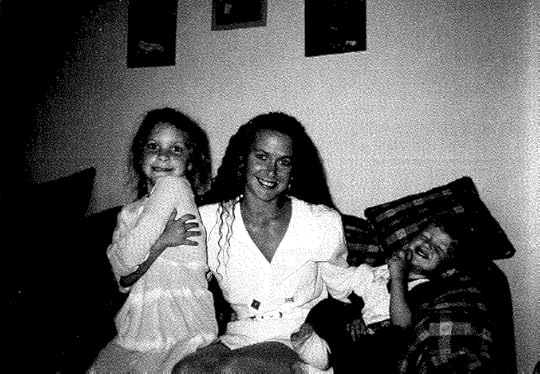 Brenda, Nicolette and Shane. Brenda videotaped a commercial with Nicolette and Shane at this time jumping on our couch which was played on channel 11 for months. It ended with Shane sliding off the couch and saying “kowabunga dudes.”
Brenda, Nicolette and Shane. Brenda videotaped a commercial with Nicolette and Shane at this time jumping on our couch which was played on channel 11 for months. It ended with Shane sliding off the couch and saying “kowabunga dudes.”  Nicolette with daughter, Kaycee
Nicolette with daughter, Kaycee 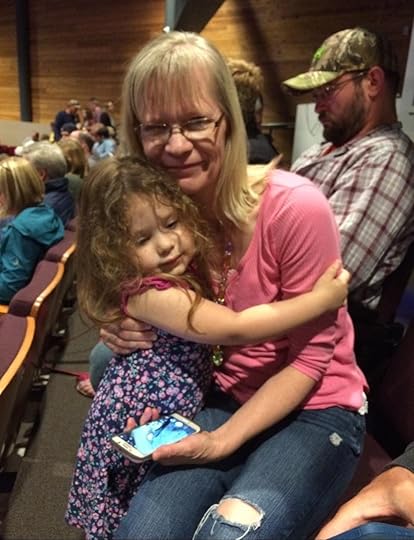 Kaycee with her grandmother, Shane
Kaycee with her grandmother, Shane 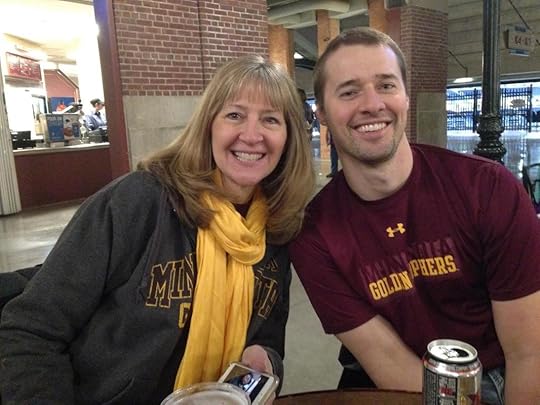 Shane with his mother-in-law, Sue (Go Gophers!)
Shane with his mother-in-law, Sue (Go Gophers!)  Nicolette and Kaycee
Nicolette and Kaycee  Brenda
Brenda  Dennis and Barb Zajac
Dennis and Barb Zajac 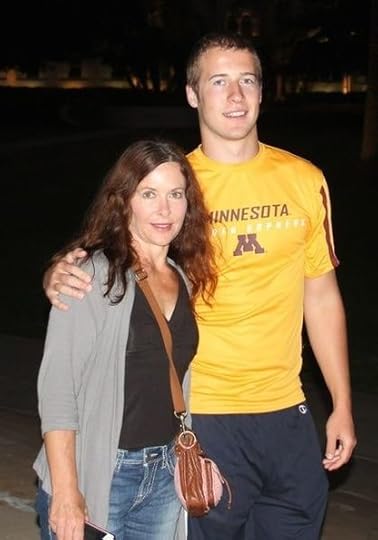 Brenda with Preston
Brenda with Preston 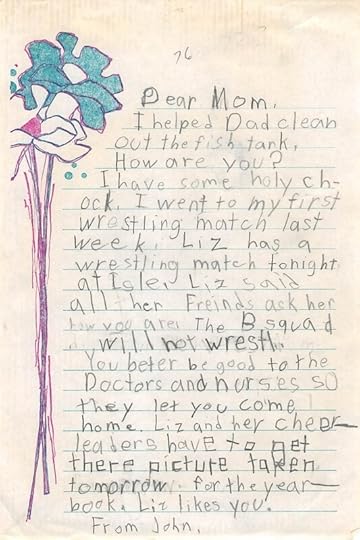 My brother John’s letter to mom when she was in the hospital. 1976
My brother John’s letter to mom when she was in the hospital. 1976 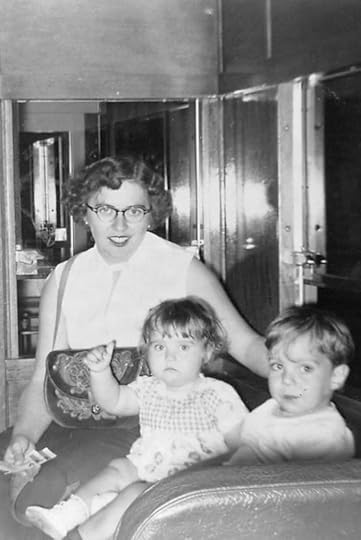 Rosetta Weber with Tony and Barb. 1955
Rosetta Weber with Tony and Barb. 1955 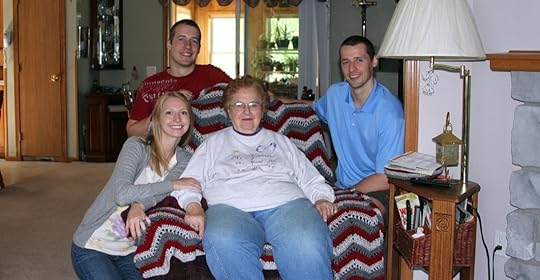 Rosetta with grandchildren
Rosetta with grandchildren 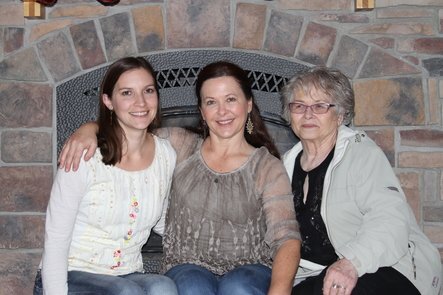 Nicolette, Brenda, and Janet
Nicolette, Brenda, and Janet 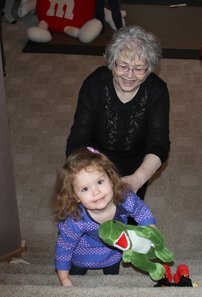 Janet with great-granddaughter Kaycee
Janet with great-granddaughter Kaycee 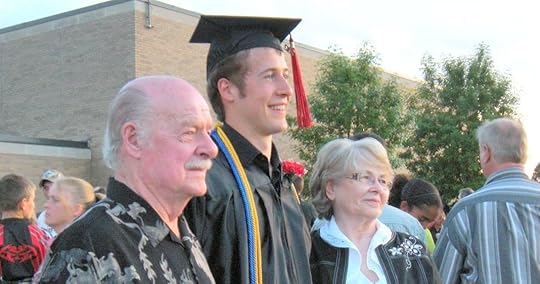 Rod Brixius, Preston and Janet Brixius
Rod Brixius, Preston and Janet Brixius 
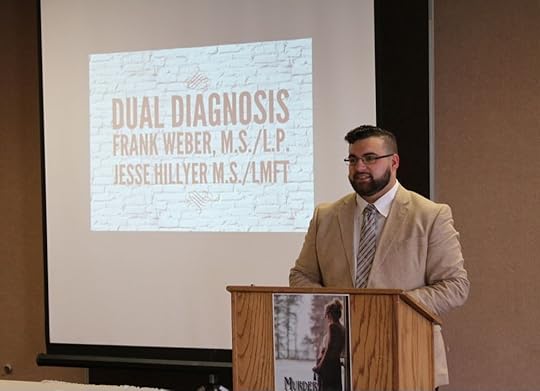 Dual Diagnosis conference at Cragun's Resort by Brainerd
Dual Diagnosis conference at Cragun's Resort by Brainerd
Published on May 07, 2017 08:53
May 1, 2017
Dual Diagnosis and 4 years of Grandma Brenda
Substance use is the most dangerous disorder. Abusing substances increases the risk of violent behavior 7X. If someone is both mentally ill and abusing substances (dual diagnosis), their risk of violence increases 10X. In today’s blog I want to address the problems with, and solutions to, addressing dual diagnosis.
Dual Diagnosis is when someone experiences mental illness and substance abuse issues simultaneously. Statistics for the U.S.:
Problems with dual diagnosis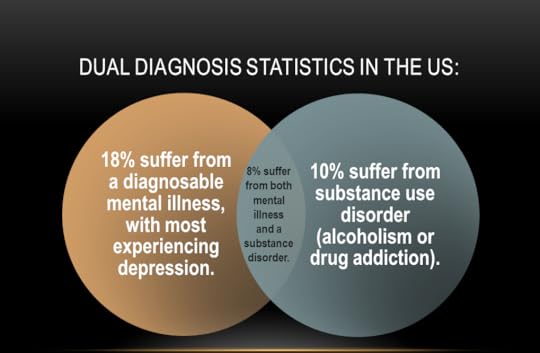
Statistics among incarcerated inmates in the U.S.:
65% of inmates have substance abuse issues (alcoholism or drug addiction)
55% of male inmates have mental illness
73% of female inmates have mental illness
How does substance abuse and mental illness effect success when returned to the community?
30% of all inmates are reincarcerated
37% of inmates with mental illness are reincarcerated
50% of inmates with substance addiction are reincarcerated
Substance abuse is not surprising when mental illness comes first. Most people struggling with depression, anxiety, moods swings or ADHD feel they don’t fit in. A friend of mine, who had to change schools frequently as an adolescent due to his family moving, shared that the first people to accept him in every school were the substance users. While this may appear initially concerning, it’s also a good reminder that most substance users and mentally ill people are kind and decent people. They weren’t generally approaching him to use, they were simply people looking for someone with something new.
I do feel an honest examination of alcohol and drugs has to admit that there is some redeeming quality to alcohol and drugs, or millions of people wouldn’t abuse them. Alcohol, in the short run, reduces anxiety. The problem is that alcohol never solves the problem contributing to the anxiety. Drugs introduce artificial neurotransmitters substances, such as endorphins, to your brain resulting in the feeling of euphoria. The problem is you pay a price for this. Our bodies work well when we take care of them, so when you introduce artificial endorphins, your brain stops producing them naturally. For every high above normal, you experience a subsequent low below normal. The neurons in our brain are like extension cords that don’t quite connect. Instead they release chemicals (neurotransmitter substances—in this case endorphins) from one to the next, which affect our mood and behavior.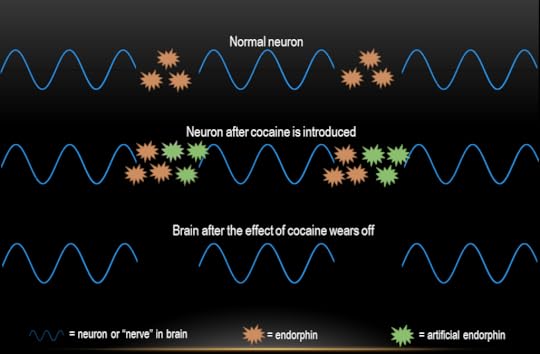
When you introduce an artificial endorphin your brain stops producing the natural endorphins which make you feel good. This is why it can take a heavy drug user a year of sobriety before they start thinking normal again. And sometimes when you mess with chemical combinations in your brain they never return to normal. The result in this case can be mental illness following substance use and an ongoing dual diagnosis. Because of the depletion of neurotransmitter substances, the withdrawal from drug abuse is the opposite of the drug effect. For example withdrawal from alcoholism (a depressant) involves high anxiety, while withdrawal from methamphetamine (a stimulant) involves lethargy and depression. The irony (or perhaps the lesson) is that using a substance to alleviate a mood leaves you worse off than when you started.
Why is dual diagnosis so hard to assess?
There isn’t one simple test. Lets start with substance abuse. Insurance companies require that therapists administer the CAGEAID to identify alcohol or drug addiction. It is called the CAGEAID because of the first letter of the bolded words.Have you ever felt you ought to cut down on your drinking or drug use?Have people annoyed you by criticizing your drinking or drug use?Have you ever felt guilty or bad about your drinking or drug use?Have you ever had a drink or used drugs first thing in the morning to get the day started? (eye opener) A score of 2 or more positive responses warrants further evaluation.
The problem with assessing substance abuse is that you need people to be honest about their use, and substance abusers typically are not honest about it. So it is very helpful to have collateral information from others who know the person. Often Chemical Dependency assessors will not recommend c.d. treatment if the person does not have insurance that will pay for it. (This is frustrating as it ends up being more of an access to services assessment than a chemical dependency assessment.)
The best tools for measuring mental illness do not exist in one instrument. For example, the best measure of major mental illness is the Minnesota Multiphasic Personality Inventory-2 (MMPI-2). It not only has measures to see if someone is lying, it will tell you how they’re lying (to make themselves appear better or worse than they actually are). You can give someone the MMPI-2 ten years later and their profile will be the same.
The best measure of a personality disorder is the Millon Clinical Multiaxial Inventory-III (MCMI-III). Mental illnesses (like schizophrenia), are often treatable with medication, while personality disorders (like antisocial personality disorder) are not. Personality disorders are long-standing ways of interacting with others.
The best measure of depression and suicidal ideation is the Hamilton Depression Inventory. The Beck Depression Inventory-2 is very good also.
So ideally, a psychologist is using a battery of tests (like the ones identified above) to identify the variety of possibilities.
Why is the feedback on dual diagnosis programs so hot and cold (great or terrible)?
Because there are more than 200 classified mental illnesses and most need different types of treatment.
Solutions
The question you need to ask when referring someone to a “dual diagnosis” treatment program is which particular mental illness or personality disorder do they address well. For example, you treat someone with dependent personality disorder far different than someone with antisocial personality disorder or depression or schizophrenia or autism. You can’t have a “one size fits all” dual diagnosis treatment program. If they say we treat all, you’re better off having the person involved in individual therapy with someone who addresses their mental illness well, while they are attending substance use programming. If they can’t stay sober in outpatient treatment, they need to do inpatient. It’s interesting when people say they can’t afford it, because there is always enough money to use.
Some say you should always treat the addiction first. That is not necessarily true. While you won’t have success if they are continuing to use, sometimes if you don’t treat them simultaneously you will never get them sober. For example, you may have an extremely anxious person attend individual therapy in addition to her chemical dependency treatment.
Encourage them to consider medication if their therapist is telling them it’s necessary. While many substance abusers say, “from now on I’m not taking any more pills” it’s not the answer for everyone. Think of the absurdity of this change. For years they’ve been putting a substance in their system made by someone who didn’t graduate from high school in a home so dirty you wouldn’t eat a sandwich if they handed it to you. But now, they won’t consider a medication researched and tested by a doctor to effectively treat depression.
The unhealthiest people, of all of us, are people who claim they can solve their problems on their own. The wise recognize no one person has all the answers, so they seek out the best sources of information and help.
Quotes for the week:
“I farted on a bus and 4 people turned around. I felt like I was on the Voice!” Will Ferrell
I enjoy when people misuse clichés. I particularly enjoy when I have to stop and think about what it’s supposed to be. For example, a man stated, “You really shouldn’t throw stones at people who live in glass houses.” (I used this in Murder Book.) While true, the original saying is, “People who live in glass houses shouldn’t cast stones.” Another: "They had us surrounded—just like canned ducks." (sitting ducks)
“I want to go peacefully like my grandfather—in his sleep. Not yelling and screaming like the passengers in his car.” Bob Monkhouse
Therapist- "Do you ever experience racing thoughts?"
Client- “Yeah, but my wife doesn’t want me racing anymore.”
Thanks for listening,
Frank April 29, 2017 Waconia Author Panel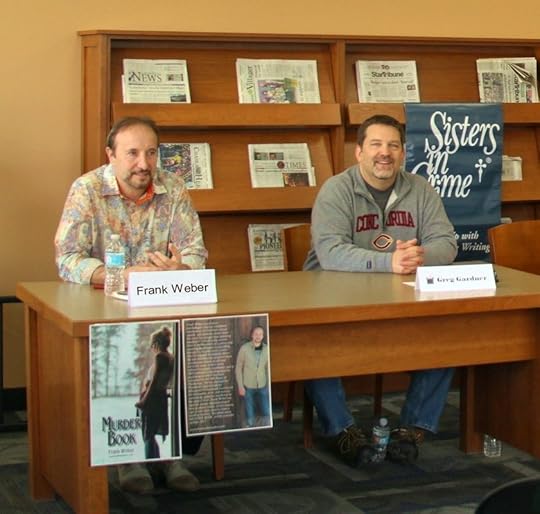
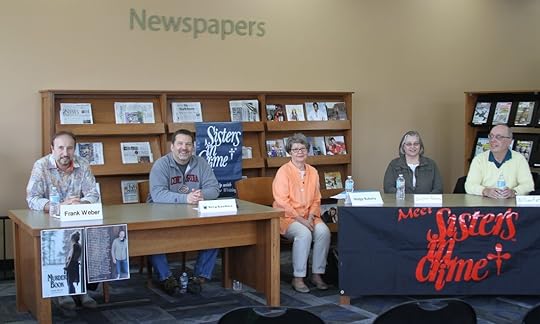 As Mother's Day approaches I have to share a shot of Brenda's 4 years of being a grandmother,
As Mother's Day approaches I have to share a shot of Brenda's 4 years of being a grandmother,
and a shot of course of the proud father, Branden Deal, giving Kaycee a kiss.


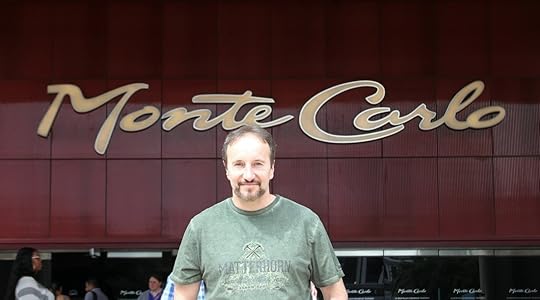

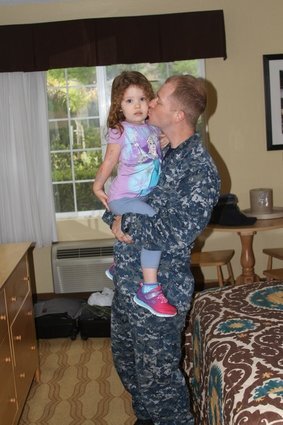
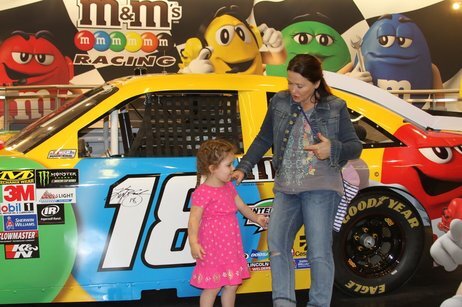 Nicolette and Kaycee on our last trip to Morrow Bay, California,
Nicolette and Kaycee on our last trip to Morrow Bay, California,
before Branden, Nicolette and Kaycee move to the East coast.
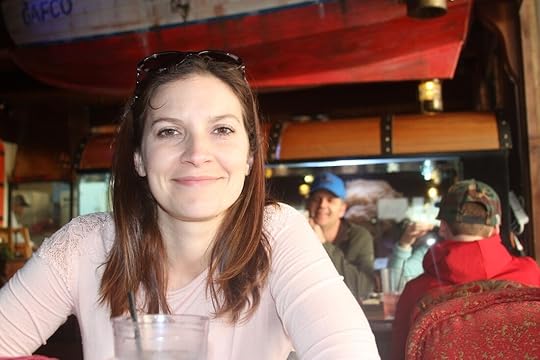
Dual Diagnosis is when someone experiences mental illness and substance abuse issues simultaneously. Statistics for the U.S.:
Problems with dual diagnosis

Statistics among incarcerated inmates in the U.S.:
65% of inmates have substance abuse issues (alcoholism or drug addiction)
55% of male inmates have mental illness
73% of female inmates have mental illness
How does substance abuse and mental illness effect success when returned to the community?
30% of all inmates are reincarcerated
37% of inmates with mental illness are reincarcerated
50% of inmates with substance addiction are reincarcerated
Substance abuse is not surprising when mental illness comes first. Most people struggling with depression, anxiety, moods swings or ADHD feel they don’t fit in. A friend of mine, who had to change schools frequently as an adolescent due to his family moving, shared that the first people to accept him in every school were the substance users. While this may appear initially concerning, it’s also a good reminder that most substance users and mentally ill people are kind and decent people. They weren’t generally approaching him to use, they were simply people looking for someone with something new.
I do feel an honest examination of alcohol and drugs has to admit that there is some redeeming quality to alcohol and drugs, or millions of people wouldn’t abuse them. Alcohol, in the short run, reduces anxiety. The problem is that alcohol never solves the problem contributing to the anxiety. Drugs introduce artificial neurotransmitters substances, such as endorphins, to your brain resulting in the feeling of euphoria. The problem is you pay a price for this. Our bodies work well when we take care of them, so when you introduce artificial endorphins, your brain stops producing them naturally. For every high above normal, you experience a subsequent low below normal. The neurons in our brain are like extension cords that don’t quite connect. Instead they release chemicals (neurotransmitter substances—in this case endorphins) from one to the next, which affect our mood and behavior.

When you introduce an artificial endorphin your brain stops producing the natural endorphins which make you feel good. This is why it can take a heavy drug user a year of sobriety before they start thinking normal again. And sometimes when you mess with chemical combinations in your brain they never return to normal. The result in this case can be mental illness following substance use and an ongoing dual diagnosis. Because of the depletion of neurotransmitter substances, the withdrawal from drug abuse is the opposite of the drug effect. For example withdrawal from alcoholism (a depressant) involves high anxiety, while withdrawal from methamphetamine (a stimulant) involves lethargy and depression. The irony (or perhaps the lesson) is that using a substance to alleviate a mood leaves you worse off than when you started.
Why is dual diagnosis so hard to assess?
There isn’t one simple test. Lets start with substance abuse. Insurance companies require that therapists administer the CAGEAID to identify alcohol or drug addiction. It is called the CAGEAID because of the first letter of the bolded words.Have you ever felt you ought to cut down on your drinking or drug use?Have people annoyed you by criticizing your drinking or drug use?Have you ever felt guilty or bad about your drinking or drug use?Have you ever had a drink or used drugs first thing in the morning to get the day started? (eye opener) A score of 2 or more positive responses warrants further evaluation.
The problem with assessing substance abuse is that you need people to be honest about their use, and substance abusers typically are not honest about it. So it is very helpful to have collateral information from others who know the person. Often Chemical Dependency assessors will not recommend c.d. treatment if the person does not have insurance that will pay for it. (This is frustrating as it ends up being more of an access to services assessment than a chemical dependency assessment.)
The best tools for measuring mental illness do not exist in one instrument. For example, the best measure of major mental illness is the Minnesota Multiphasic Personality Inventory-2 (MMPI-2). It not only has measures to see if someone is lying, it will tell you how they’re lying (to make themselves appear better or worse than they actually are). You can give someone the MMPI-2 ten years later and their profile will be the same.
The best measure of a personality disorder is the Millon Clinical Multiaxial Inventory-III (MCMI-III). Mental illnesses (like schizophrenia), are often treatable with medication, while personality disorders (like antisocial personality disorder) are not. Personality disorders are long-standing ways of interacting with others.
The best measure of depression and suicidal ideation is the Hamilton Depression Inventory. The Beck Depression Inventory-2 is very good also.
So ideally, a psychologist is using a battery of tests (like the ones identified above) to identify the variety of possibilities.
Why is the feedback on dual diagnosis programs so hot and cold (great or terrible)?
Because there are more than 200 classified mental illnesses and most need different types of treatment.
Solutions
The question you need to ask when referring someone to a “dual diagnosis” treatment program is which particular mental illness or personality disorder do they address well. For example, you treat someone with dependent personality disorder far different than someone with antisocial personality disorder or depression or schizophrenia or autism. You can’t have a “one size fits all” dual diagnosis treatment program. If they say we treat all, you’re better off having the person involved in individual therapy with someone who addresses their mental illness well, while they are attending substance use programming. If they can’t stay sober in outpatient treatment, they need to do inpatient. It’s interesting when people say they can’t afford it, because there is always enough money to use.
Some say you should always treat the addiction first. That is not necessarily true. While you won’t have success if they are continuing to use, sometimes if you don’t treat them simultaneously you will never get them sober. For example, you may have an extremely anxious person attend individual therapy in addition to her chemical dependency treatment.
Encourage them to consider medication if their therapist is telling them it’s necessary. While many substance abusers say, “from now on I’m not taking any more pills” it’s not the answer for everyone. Think of the absurdity of this change. For years they’ve been putting a substance in their system made by someone who didn’t graduate from high school in a home so dirty you wouldn’t eat a sandwich if they handed it to you. But now, they won’t consider a medication researched and tested by a doctor to effectively treat depression.
The unhealthiest people, of all of us, are people who claim they can solve their problems on their own. The wise recognize no one person has all the answers, so they seek out the best sources of information and help.
Quotes for the week:
“I farted on a bus and 4 people turned around. I felt like I was on the Voice!” Will Ferrell
I enjoy when people misuse clichés. I particularly enjoy when I have to stop and think about what it’s supposed to be. For example, a man stated, “You really shouldn’t throw stones at people who live in glass houses.” (I used this in Murder Book.) While true, the original saying is, “People who live in glass houses shouldn’t cast stones.” Another: "They had us surrounded—just like canned ducks." (sitting ducks)
“I want to go peacefully like my grandfather—in his sleep. Not yelling and screaming like the passengers in his car.” Bob Monkhouse
Therapist- "Do you ever experience racing thoughts?"
Client- “Yeah, but my wife doesn’t want me racing anymore.”
Thanks for listening,
Frank April 29, 2017 Waconia Author Panel

 As Mother's Day approaches I have to share a shot of Brenda's 4 years of being a grandmother,
As Mother's Day approaches I have to share a shot of Brenda's 4 years of being a grandmother,and a shot of course of the proud father, Branden Deal, giving Kaycee a kiss.






 Nicolette and Kaycee on our last trip to Morrow Bay, California,
Nicolette and Kaycee on our last trip to Morrow Bay, California,before Branden, Nicolette and Kaycee move to the East coast.


Published on May 01, 2017 15:09
April 23, 2017
Cyphers, the Zodiac Killer and the Exorcist
A cypher, also referred to as a cryptogram, is information contained in a code. For example, spies in World War II often communicated in cyphers. It is also called steganography. Cyphers are often created by writing a message and substituting symbols for the letters (monoalphabetic substitution ciphers). This type of cypher or cipher (either spelling is okay) is the most common. The recipient needs to have the symbols to decode it. Another way of cyphering is to have a message written within the context of a letter. In this case, the recipient needs to know the sequence of letters to pay attention to. Polyalphabetic ciphers can involve moving every letter of the alphabet over one letter so the page looks like random letters.
Code breakers consider that “e” is the most commonly used letter in the English language. They look for patterns of letters and pay particular attention to single letter words. The most common 4 letter word is “that.” The most common 3 letter words are “the, and, for, was and his.” The most common 2 letter words are “of, to, in, is, and it.” The most common double letter is “ll,” followed by "ee, ss, oo and tt.” Occasionally serial killers write cryptic messages, as in the case of the Zodiac killer, and leave it to the public to decipher. The follow up book to Murder Book involves a killer who leaves a cypher at the murder scene.
Zodiac Killer
The Zodiac Killer was a serial killer who operated in northern California in the late 1960s and early 1970s. The killer's identity remains unknown. The Zodiac murdered between December 1968 and October 1969. Four men and three women between the ages of 16 and 29 were targeted. The killer originated the name "Zodiac" in a series of taunting letters sent to the local Bay Area press. These letters included four cryptograms (or ciphers). Of the four cryptograms sent, only one has been definitively solved.
The first murders widely attributed to the Zodiac Killer were the shootings of high school students Betty Lou Jensen and David Faraday on December 20, 1968, on Lake Herman Road. The couple were on their first date and planned to attend a Christmas concert at Hogan High School about three blocks from Jensen's home. The couple instead parked on a gravel turnout, which was a well-known lovers' lane. Shortly after 11:00 p.m., their bodies were found by Stella Borges, who lived nearby. The Solano County Sheriff's Department investigated the crime but no leads developed.
Utilizing available forensic data, Robert Graysmith postulated that another car pulled into the turnout, just prior to 11:00 p.m. and parked beside the couple. The killer apparently exited the second car and walked toward the car ordering the couple out. Betty Jensen appeared to have exited the car first. When David Faraday was halfway out, the killer apparently shot Faraday in the head. Betty Jensen was gunned down twenty-eight feet from the car, fleeing from the killer, with five shots through her back. The killer then drove off.
Blue Rock Springs Attack
Just before midnight on July 4, 1969, Darlene Ferrin and Michael Mageau drove into the Blue Rock Springs Park in Vallejo, four miles from the Lake Herman Road murder site, and parked. A second car drove into the lot and parked alongside them but then left. Returning about 10 minutes later, the car parked behind them. The driver exited the vehicle, approaching the passenger side door of Ferrin's car, carrying a flashlight and a 9 mm Luger. The killer directed the flashlight into Mageau's and Ferrin's eyes before shooting at them, firing five times. Both victims were hit, and several bullets had passed through Mageau and into Ferrin. The killer walked away from the car but upon hearing Mageau's moaning, returned and shot each victim twice more before driving off.
On July 5, 1969, at 12:40 a.m., a man phoned the Vallejo Police Department to report and claim responsibility for the attack. The caller also took credit for the murders of Jensen and Faraday six-and-a-half months earlier. The police traced the call to a phone booth at a gas station at Springs Road and Tuolumne, about three-tenths of a mile from Ferrin's home and only a few blocks from the Vallejo Police Department. Ferrin was pronounced dead at the hospital. Mageau survived the attack despite being shot in the face, neck and chest.
The killer was almost caught after this shooting. Police were pulling over cars, but had thought the caller said the shooter was black. Later, they found out they were mistaken, and in one of the letters from the Zodiac he commented about having been pulled over.
Letters from the Zodiac
On August 1, 1969, three letters prepared by the killer were received at the Vallejo Times Herald , the San Francisco Chronicle , and The San Francisco Examiner . The nearly identical letters took credit for the shootings at Lake Herman Road and Blue Rock Springs. Each letter also included one-third of a 408-symbol cryptogram which the killer claimed contained his identity. The killer demanded they be printed on each paper's front page or he would "cruse around all weekend killing lone people in the night then move on to kill again, until I end up with a dozen people over the weekend."
On August 7, 1969, another letter was received at The San Francisco Examiner with the salutation "Dear Editor This is the Zodiac speaking." This was the first time the killer had used this name for identification. The letter was a response to Chief Stiltz's request for more details that would prove he had killed Faraday, Jensen and Ferrin. In it, the Zodiac included details about the murders which had not yet been released to the public, as well as a message to the police that when they cracked his code, "They will have me."
On August 8, 1969, Donald and Bettye Harden of Salinas (retired teachers), cracked the 408-symbol cryptogram. It contained a misspelled message in which the killer said he was collecting slaves for the afterlife.
Lake Berryessa Attack
On September 27, 1969, Pacific Union College students Bryan Hartnell and Cecelia Shepard were picnicking at Lake Berryessa on a small island. A man approached them wearing a black executioner's-type hood with clip-on sunglasses over the eye-holes and a bib-like device on his chest that had a white 3"x3" cross-circle symbol on it. He approached them with a gun, which Hartnell believed to be a .45. The hooded man claimed to be an escaped convict from Deer Lodge, Montana, where he had killed a guard and stolen a car, explaining that he needed their car and money to go to Mexico. He had brought precut lengths of plastic clothesline and told Shepard to tie up Hartnell, before he tied her up. The killer checked, and tightened Hartnell's bonds after discovering Shepard had bound Hartnell's hands loosely. Hartnell initially believed it to be a weird robbery, but the man drew a knife and stabbed them both repeatedly. The killer then hiked 500 yards back up to Knoxville Road, drew the cross-circle symbol on Hartnell's car door with a black felt-tip pen, and wrote beneath it: "Vallejo/12-20-68/7-4-69/Sept 27–69–6:30/by knife
The Most Likely Suspect
There is a significant amount of circumstantial evidence linking Arthur Leigh Allen to the Zodiac killings. Allen was given a Zodiac watch as a Christmas present from his mom in 1967 which had the circle and cross symbol on it. He hated his mother. Allen was known to park his car and drink alcohol in it by the Lake Herman area, where 2 of the murders occurred. Allen had a bad temper and always kept a loaded gun in his vehicle. Allen had entered the military but was kicked out after serving less than 2 years. He took a job teaching elementary school. During his couple years of teaching, he only used 1 sick day--the day after Cheri Jo Bates was stabbed to death. (Cheri Jo Bates, age 18, was a Riverside Community College student who was brutally stabbed to death. Arthur Allen was in the area at the time. The Zodiac made reference to the Cheri Bates murder in his letters, even though it was only carried on local news. Investigators proved Allen was in the area at the time. Her murder is unsolved and many attribute it to the Zodiac killer.) Allen was fired as a teacher for molesting a child. A search of Allen’s home revealed he had the model typewriter that was used to send the letters to police. In 1972, a friend of Allen’s revealed to police Allen told him he planned on killing couples at random and planned on taunting the police with his success. The police searched a trailer Allen listed as his address, but failed to search where he was actually living. According to his family and friends, Allen possessed codes with identical symbols to those used by the Zodiac. The Zodiac spelled words occasionally with double “ss” like “bussy work,” as did Allen. Investigators believed the killer was very familiar with the Vallejo, California, area and Allen lived there. The first 2 homicide scenes were within 7 minutes of his home. The Blue Rock Springs surviving victim picked Allen out of a line-up as the man who attempted to kill her. According to the surviving Berryessa victim, Allen’s physical appearance and voice were the same as the man who assaulted her. Someone had seen Allen with bloody knives on the day of the stabbing. Allen told investigators he had killed a chicken. Allen had a 10.5 shoe size, the same as the Zodiac killer.
When Arthur Allen attended Sonoma State College the Zodiac murders ended, but the Sonoma coed murders began. They are officially referred to as the “Santa Rosa hitchhiker murders” and involved the murders of 6 girls ages 12 to 23. They remain unsolved and many attribute these murders to the Zodiac. Allen was living in Santa Rosa at the time. If you mapped where the first 2 murdered coeds were last seen, and where they were found, Allen’s residence was directly between them. When Allen was incarcerated in 1975 for child molestation, the letters to the newspapers ended. Arthur Leigh Allen died at age 58 in 1992, from diabetes and heart problems. DNA testing on the stamps did not match Allen, but his family said he often didn’t lick his stamps because he didn’t like the taste.
Copycat
In 1996, a man claiming to be the Zodiac killer, Heriberto “Eddie” Seda was arrested in New York City. Seda attacked people throughout New York City, sending taunting messages to the police and media after each crime. The messages included codes based on International maritime signal flags, which New York Post journalist Keiran Crowley decoded with the assistance of his father-in-law, a veteran of WWII cryptography. The killer's letters to police claimed that he was selecting his victims based on their signs of the Zodiac, and implied he would act only at certain times when specific stars were visible in the night sky. He used an improvised firearm, explaining in his messages that the lack of rifling marks on the shells would prevent his capture. (Police are still able to trace bullets back to home-made weapons as they still leave unique marks.)
New York police considered the possibility that the notorious Zodiac Killer may have relocated to the East Coast and resumed his crimes after two decades of inactivity. However, a handwriting analyst and consultation with California authorities ruled out that possibility.
Capture of the Copycat
Heriberto Seda, age 26, was an unemployed high school drop-out, living with his mother and half-sister. On June 18, 1996, Seda was mad that his half-sister (Gladys Reyes) because she was in a bedroom with her boyfriend. Seda pulled out a weapon and began threatening the couple. While Reyes' boyfriend hid in the bedroom, his sister tried to escape through the front door, but Seda shot her in the buttocks. Wounded but not incapacitated, she made her way to her neighbor’s apartment where she called the police. Seda drew the killer’s Zodiac symbol on the bottom of the page during his statement to police. Seda shot 8 people, killing 3 in New York. His killings didn’t have the same search for young women exhibited by the original Zodiac killer. Seda’s DNA was connected to a stamp on one of the letters sent to police in New York, however, he was not matched to the California killings. It is believed the original Zodiac killer was never caught. Here is a weird aside on Heriberto Seda: In prison, Seda began a romantic affair with Synthia-China Blast, a "Latin King" gang member who identifies as female, and is serving a sentence for a gang-related murder. Their relationship received attention due to their legal battle to be allowed to marry while incarcerated, and due to Blast's efforts to obtain gender-reassignment surgery.
Exorcism and Education
I am named after my grandfather, Frank Kapsner. Frank and his brothers (3 became priests) played a lot of baseball. His brother, Father Celestine Kapsner (Carl), was the Chicago priest who wrote Be Gone Satan, which was the basis for the movie The Exorcist. It’s significant to note that The Exorcist is a movie, not a documentary. Father Celestine was proud of his ability to bring people back to the church through discussion. Father Oliver (Leonard) was a historian and a librarian and his picture is displayed in the St. John’s library. Father Roland was known for his since of humor. Another of Frank Kapsner’s siblings, Sister Benedict, was the treasurer at St. Benedicts. My mother’s sibling, Sister Mary Cecilia (Cecilia) taught business at St. Cloud Cathedral. Involvement in the church was the only way for poor people to receive an advanced education two generations ago.
Quote for the week:
When I was pulled over the officer looked at my driver’s license and asked me to take my glasses off. I complied, but thought, “Yeah, I’m on the run and the only disguise I could come up with is these clear glasses. Should I go home and put on the shirt I was wearing for my license picture too.” Hannibal Buress
“I don’t really think I need buns of steel. I’d be happy with buns of cinnamon.” Ellen Degeneres
Thanks for listening,
Frank Austin, Texas. Summer, 2015 As I’m speaking, people ask me how I tolerate the stress of forensic work. The answer is I enjoy my life away from work. We had one of our most enjoyable vacations in Austin, Texas, and plan to return someday. Bobby Flay said the Salt Lick had the best barbecue he’s ever eaten so we verified that it is amazing. They slow barbecue all of their meat overnight, and when it’s gone the restaurant closes, every day.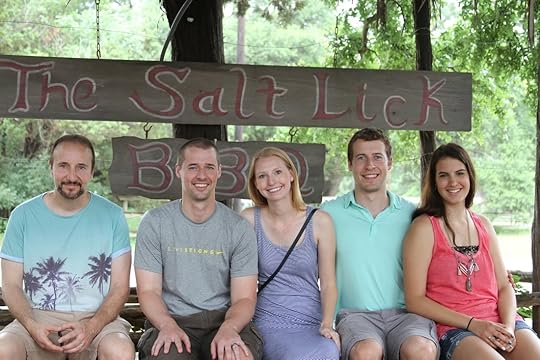
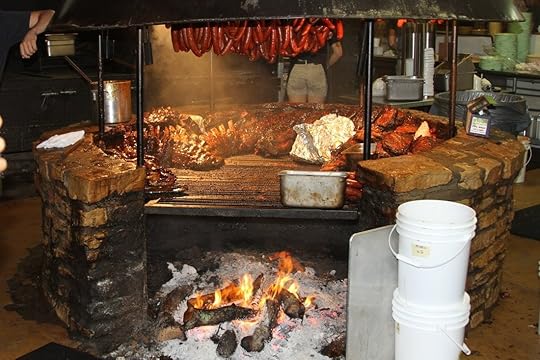



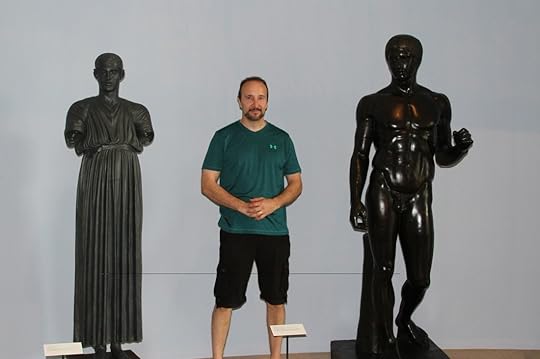
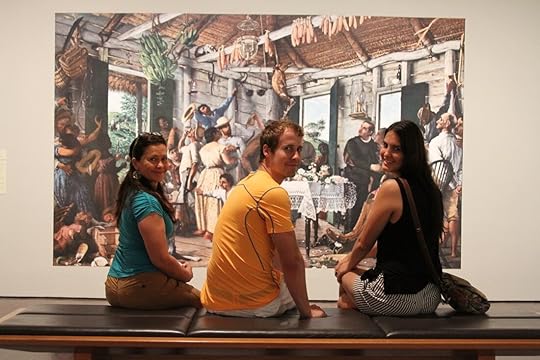

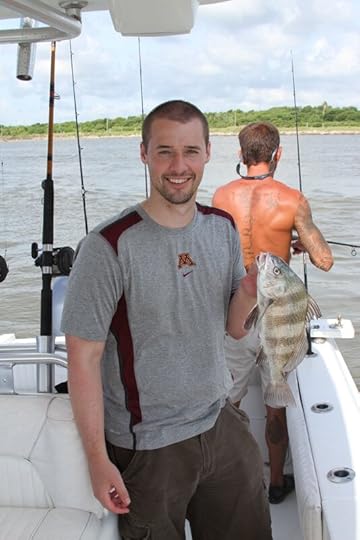
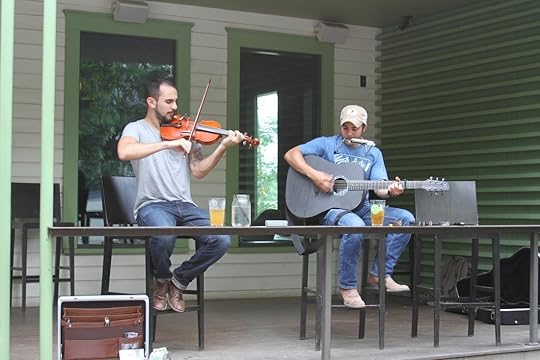
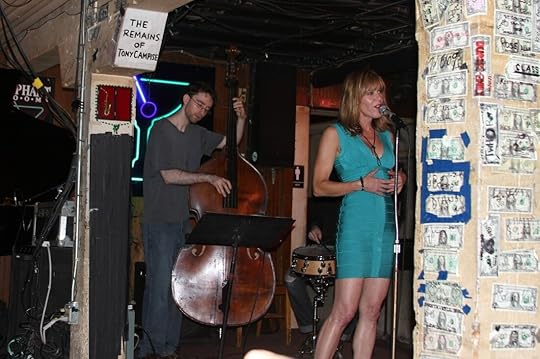
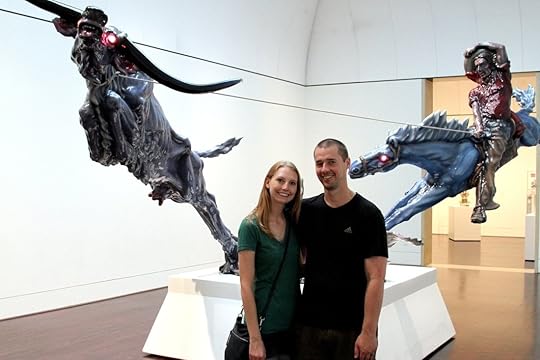
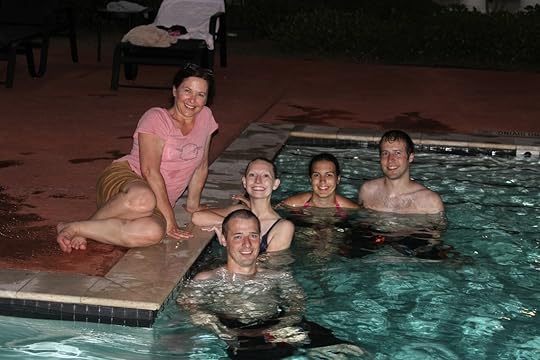 I had heard about Rocket electric bike tours in Austin on Jimmy Fallon so I called Rocket bikes and talked them into giving us a tour of music venues in Austin on their electric bikes. Austin is currently the best place to hear live music. We listened to a symphony, a jazz band, some great country bands, a nightclub blues singer, and a variety of small music acts. A block of homes were purchased and made into bars, with folk music playing on the porches. You buy a beverage, walk through the yards and listen. The only glitch was when my daughter-in-law ran a guy off a bridge with her bike. Actually, he didn’t jump—just thought about it. Austin has a long section of scenic biking walkway over the river which we rode before we hit the clubs. I’m in for doing this again!
I had heard about Rocket electric bike tours in Austin on Jimmy Fallon so I called Rocket bikes and talked them into giving us a tour of music venues in Austin on their electric bikes. Austin is currently the best place to hear live music. We listened to a symphony, a jazz band, some great country bands, a nightclub blues singer, and a variety of small music acts. A block of homes were purchased and made into bars, with folk music playing on the porches. You buy a beverage, walk through the yards and listen. The only glitch was when my daughter-in-law ran a guy off a bridge with her bike. Actually, he didn’t jump—just thought about it. Austin has a long section of scenic biking walkway over the river which we rode before we hit the clubs. I’m in for doing this again!
Code breakers consider that “e” is the most commonly used letter in the English language. They look for patterns of letters and pay particular attention to single letter words. The most common 4 letter word is “that.” The most common 3 letter words are “the, and, for, was and his.” The most common 2 letter words are “of, to, in, is, and it.” The most common double letter is “ll,” followed by "ee, ss, oo and tt.” Occasionally serial killers write cryptic messages, as in the case of the Zodiac killer, and leave it to the public to decipher. The follow up book to Murder Book involves a killer who leaves a cypher at the murder scene.
Zodiac Killer
The Zodiac Killer was a serial killer who operated in northern California in the late 1960s and early 1970s. The killer's identity remains unknown. The Zodiac murdered between December 1968 and October 1969. Four men and three women between the ages of 16 and 29 were targeted. The killer originated the name "Zodiac" in a series of taunting letters sent to the local Bay Area press. These letters included four cryptograms (or ciphers). Of the four cryptograms sent, only one has been definitively solved.
The first murders widely attributed to the Zodiac Killer were the shootings of high school students Betty Lou Jensen and David Faraday on December 20, 1968, on Lake Herman Road. The couple were on their first date and planned to attend a Christmas concert at Hogan High School about three blocks from Jensen's home. The couple instead parked on a gravel turnout, which was a well-known lovers' lane. Shortly after 11:00 p.m., their bodies were found by Stella Borges, who lived nearby. The Solano County Sheriff's Department investigated the crime but no leads developed.
Utilizing available forensic data, Robert Graysmith postulated that another car pulled into the turnout, just prior to 11:00 p.m. and parked beside the couple. The killer apparently exited the second car and walked toward the car ordering the couple out. Betty Jensen appeared to have exited the car first. When David Faraday was halfway out, the killer apparently shot Faraday in the head. Betty Jensen was gunned down twenty-eight feet from the car, fleeing from the killer, with five shots through her back. The killer then drove off.
Blue Rock Springs Attack
Just before midnight on July 4, 1969, Darlene Ferrin and Michael Mageau drove into the Blue Rock Springs Park in Vallejo, four miles from the Lake Herman Road murder site, and parked. A second car drove into the lot and parked alongside them but then left. Returning about 10 minutes later, the car parked behind them. The driver exited the vehicle, approaching the passenger side door of Ferrin's car, carrying a flashlight and a 9 mm Luger. The killer directed the flashlight into Mageau's and Ferrin's eyes before shooting at them, firing five times. Both victims were hit, and several bullets had passed through Mageau and into Ferrin. The killer walked away from the car but upon hearing Mageau's moaning, returned and shot each victim twice more before driving off.
On July 5, 1969, at 12:40 a.m., a man phoned the Vallejo Police Department to report and claim responsibility for the attack. The caller also took credit for the murders of Jensen and Faraday six-and-a-half months earlier. The police traced the call to a phone booth at a gas station at Springs Road and Tuolumne, about three-tenths of a mile from Ferrin's home and only a few blocks from the Vallejo Police Department. Ferrin was pronounced dead at the hospital. Mageau survived the attack despite being shot in the face, neck and chest.
The killer was almost caught after this shooting. Police were pulling over cars, but had thought the caller said the shooter was black. Later, they found out they were mistaken, and in one of the letters from the Zodiac he commented about having been pulled over.
Letters from the Zodiac
On August 1, 1969, three letters prepared by the killer were received at the Vallejo Times Herald , the San Francisco Chronicle , and The San Francisco Examiner . The nearly identical letters took credit for the shootings at Lake Herman Road and Blue Rock Springs. Each letter also included one-third of a 408-symbol cryptogram which the killer claimed contained his identity. The killer demanded they be printed on each paper's front page or he would "cruse around all weekend killing lone people in the night then move on to kill again, until I end up with a dozen people over the weekend."
On August 7, 1969, another letter was received at The San Francisco Examiner with the salutation "Dear Editor This is the Zodiac speaking." This was the first time the killer had used this name for identification. The letter was a response to Chief Stiltz's request for more details that would prove he had killed Faraday, Jensen and Ferrin. In it, the Zodiac included details about the murders which had not yet been released to the public, as well as a message to the police that when they cracked his code, "They will have me."
On August 8, 1969, Donald and Bettye Harden of Salinas (retired teachers), cracked the 408-symbol cryptogram. It contained a misspelled message in which the killer said he was collecting slaves for the afterlife.
Lake Berryessa Attack
On September 27, 1969, Pacific Union College students Bryan Hartnell and Cecelia Shepard were picnicking at Lake Berryessa on a small island. A man approached them wearing a black executioner's-type hood with clip-on sunglasses over the eye-holes and a bib-like device on his chest that had a white 3"x3" cross-circle symbol on it. He approached them with a gun, which Hartnell believed to be a .45. The hooded man claimed to be an escaped convict from Deer Lodge, Montana, where he had killed a guard and stolen a car, explaining that he needed their car and money to go to Mexico. He had brought precut lengths of plastic clothesline and told Shepard to tie up Hartnell, before he tied her up. The killer checked, and tightened Hartnell's bonds after discovering Shepard had bound Hartnell's hands loosely. Hartnell initially believed it to be a weird robbery, but the man drew a knife and stabbed them both repeatedly. The killer then hiked 500 yards back up to Knoxville Road, drew the cross-circle symbol on Hartnell's car door with a black felt-tip pen, and wrote beneath it: "Vallejo/12-20-68/7-4-69/Sept 27–69–6:30/by knife
The Most Likely Suspect
There is a significant amount of circumstantial evidence linking Arthur Leigh Allen to the Zodiac killings. Allen was given a Zodiac watch as a Christmas present from his mom in 1967 which had the circle and cross symbol on it. He hated his mother. Allen was known to park his car and drink alcohol in it by the Lake Herman area, where 2 of the murders occurred. Allen had a bad temper and always kept a loaded gun in his vehicle. Allen had entered the military but was kicked out after serving less than 2 years. He took a job teaching elementary school. During his couple years of teaching, he only used 1 sick day--the day after Cheri Jo Bates was stabbed to death. (Cheri Jo Bates, age 18, was a Riverside Community College student who was brutally stabbed to death. Arthur Allen was in the area at the time. The Zodiac made reference to the Cheri Bates murder in his letters, even though it was only carried on local news. Investigators proved Allen was in the area at the time. Her murder is unsolved and many attribute it to the Zodiac killer.) Allen was fired as a teacher for molesting a child. A search of Allen’s home revealed he had the model typewriter that was used to send the letters to police. In 1972, a friend of Allen’s revealed to police Allen told him he planned on killing couples at random and planned on taunting the police with his success. The police searched a trailer Allen listed as his address, but failed to search where he was actually living. According to his family and friends, Allen possessed codes with identical symbols to those used by the Zodiac. The Zodiac spelled words occasionally with double “ss” like “bussy work,” as did Allen. Investigators believed the killer was very familiar with the Vallejo, California, area and Allen lived there. The first 2 homicide scenes were within 7 minutes of his home. The Blue Rock Springs surviving victim picked Allen out of a line-up as the man who attempted to kill her. According to the surviving Berryessa victim, Allen’s physical appearance and voice were the same as the man who assaulted her. Someone had seen Allen with bloody knives on the day of the stabbing. Allen told investigators he had killed a chicken. Allen had a 10.5 shoe size, the same as the Zodiac killer.
When Arthur Allen attended Sonoma State College the Zodiac murders ended, but the Sonoma coed murders began. They are officially referred to as the “Santa Rosa hitchhiker murders” and involved the murders of 6 girls ages 12 to 23. They remain unsolved and many attribute these murders to the Zodiac. Allen was living in Santa Rosa at the time. If you mapped where the first 2 murdered coeds were last seen, and where they were found, Allen’s residence was directly between them. When Allen was incarcerated in 1975 for child molestation, the letters to the newspapers ended. Arthur Leigh Allen died at age 58 in 1992, from diabetes and heart problems. DNA testing on the stamps did not match Allen, but his family said he often didn’t lick his stamps because he didn’t like the taste.
Copycat
In 1996, a man claiming to be the Zodiac killer, Heriberto “Eddie” Seda was arrested in New York City. Seda attacked people throughout New York City, sending taunting messages to the police and media after each crime. The messages included codes based on International maritime signal flags, which New York Post journalist Keiran Crowley decoded with the assistance of his father-in-law, a veteran of WWII cryptography. The killer's letters to police claimed that he was selecting his victims based on their signs of the Zodiac, and implied he would act only at certain times when specific stars were visible in the night sky. He used an improvised firearm, explaining in his messages that the lack of rifling marks on the shells would prevent his capture. (Police are still able to trace bullets back to home-made weapons as they still leave unique marks.)
New York police considered the possibility that the notorious Zodiac Killer may have relocated to the East Coast and resumed his crimes after two decades of inactivity. However, a handwriting analyst and consultation with California authorities ruled out that possibility.
Capture of the Copycat
Heriberto Seda, age 26, was an unemployed high school drop-out, living with his mother and half-sister. On June 18, 1996, Seda was mad that his half-sister (Gladys Reyes) because she was in a bedroom with her boyfriend. Seda pulled out a weapon and began threatening the couple. While Reyes' boyfriend hid in the bedroom, his sister tried to escape through the front door, but Seda shot her in the buttocks. Wounded but not incapacitated, she made her way to her neighbor’s apartment where she called the police. Seda drew the killer’s Zodiac symbol on the bottom of the page during his statement to police. Seda shot 8 people, killing 3 in New York. His killings didn’t have the same search for young women exhibited by the original Zodiac killer. Seda’s DNA was connected to a stamp on one of the letters sent to police in New York, however, he was not matched to the California killings. It is believed the original Zodiac killer was never caught. Here is a weird aside on Heriberto Seda: In prison, Seda began a romantic affair with Synthia-China Blast, a "Latin King" gang member who identifies as female, and is serving a sentence for a gang-related murder. Their relationship received attention due to their legal battle to be allowed to marry while incarcerated, and due to Blast's efforts to obtain gender-reassignment surgery.
Exorcism and Education
I am named after my grandfather, Frank Kapsner. Frank and his brothers (3 became priests) played a lot of baseball. His brother, Father Celestine Kapsner (Carl), was the Chicago priest who wrote Be Gone Satan, which was the basis for the movie The Exorcist. It’s significant to note that The Exorcist is a movie, not a documentary. Father Celestine was proud of his ability to bring people back to the church through discussion. Father Oliver (Leonard) was a historian and a librarian and his picture is displayed in the St. John’s library. Father Roland was known for his since of humor. Another of Frank Kapsner’s siblings, Sister Benedict, was the treasurer at St. Benedicts. My mother’s sibling, Sister Mary Cecilia (Cecilia) taught business at St. Cloud Cathedral. Involvement in the church was the only way for poor people to receive an advanced education two generations ago.
Quote for the week:
When I was pulled over the officer looked at my driver’s license and asked me to take my glasses off. I complied, but thought, “Yeah, I’m on the run and the only disguise I could come up with is these clear glasses. Should I go home and put on the shirt I was wearing for my license picture too.” Hannibal Buress
“I don’t really think I need buns of steel. I’d be happy with buns of cinnamon.” Ellen Degeneres
Thanks for listening,
Frank Austin, Texas. Summer, 2015 As I’m speaking, people ask me how I tolerate the stress of forensic work. The answer is I enjoy my life away from work. We had one of our most enjoyable vacations in Austin, Texas, and plan to return someday. Bobby Flay said the Salt Lick had the best barbecue he’s ever eaten so we verified that it is amazing. They slow barbecue all of their meat overnight, and when it’s gone the restaurant closes, every day.












 I had heard about Rocket electric bike tours in Austin on Jimmy Fallon so I called Rocket bikes and talked them into giving us a tour of music venues in Austin on their electric bikes. Austin is currently the best place to hear live music. We listened to a symphony, a jazz band, some great country bands, a nightclub blues singer, and a variety of small music acts. A block of homes were purchased and made into bars, with folk music playing on the porches. You buy a beverage, walk through the yards and listen. The only glitch was when my daughter-in-law ran a guy off a bridge with her bike. Actually, he didn’t jump—just thought about it. Austin has a long section of scenic biking walkway over the river which we rode before we hit the clubs. I’m in for doing this again!
I had heard about Rocket electric bike tours in Austin on Jimmy Fallon so I called Rocket bikes and talked them into giving us a tour of music venues in Austin on their electric bikes. Austin is currently the best place to hear live music. We listened to a symphony, a jazz band, some great country bands, a nightclub blues singer, and a variety of small music acts. A block of homes were purchased and made into bars, with folk music playing on the porches. You buy a beverage, walk through the yards and listen. The only glitch was when my daughter-in-law ran a guy off a bridge with her bike. Actually, he didn’t jump—just thought about it. Austin has a long section of scenic biking walkway over the river which we rode before we hit the clubs. I’m in for doing this again!
Published on April 23, 2017 15:30
April 13, 2017
"Speaking of Murder Book..." Harry Potter and Las Vegas
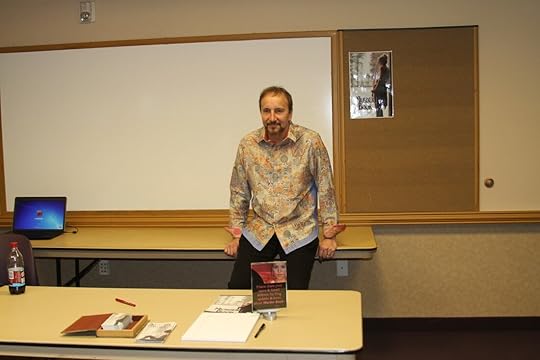 Speaking on Murder Book in Las Vegas I am offering people the opportunity to come up with some “killer music” to be played in the background for the Murder Book opening on May 10 at the SCSU Welcome Center. While I’m serious about forensic work, and Murder Book, I’m thinking we could make the book opening lighter by involving people in selecting some “killer music.” Let me throw out some examples: Without a Trace (Soul Asylum), Dyer Maker (Led Zeppelin), Goodbye to You (Scandal), Dead Flowers (Rolling Stones), Push (Matchbox 20), Don’t Speak (No Doubt), Santeria (Sublime), etc… I’m looking for ironic, not gory. For Example: When Gwen Stefani wrote, “I can see us dying…” in ‘Don’t Speak’ she probably wasn’t thinking it would be played at a murder thriller opening. Comment with your suggestions or to simply support one of the songs suggested.
Speaking on Murder Book in Las Vegas I am offering people the opportunity to come up with some “killer music” to be played in the background for the Murder Book opening on May 10 at the SCSU Welcome Center. While I’m serious about forensic work, and Murder Book, I’m thinking we could make the book opening lighter by involving people in selecting some “killer music.” Let me throw out some examples: Without a Trace (Soul Asylum), Dyer Maker (Led Zeppelin), Goodbye to You (Scandal), Dead Flowers (Rolling Stones), Push (Matchbox 20), Don’t Speak (No Doubt), Santeria (Sublime), etc… I’m looking for ironic, not gory. For Example: When Gwen Stefani wrote, “I can see us dying…” in ‘Don’t Speak’ she probably wasn’t thinking it would be played at a murder thriller opening. Comment with your suggestions or to simply support one of the songs suggested.There are a few songs I will include because they are either referenced in the book or go along with the story, such as Missing You (Alison Krauss and John Waite), Thrasher (Neil Young), Against the Wind (Bob Seger), All Along the Watchtower (Jimi Hendrix) and September When It Comes (Roseanne and Johnny Cash).
It was important for me that Murder Book address forensic work accurately and addresses every day life appropriately. Everybody who has watched Law and Order has viewed the scene where the guy continues loading the van when he’s being questioned by two homicide investigators. Can anybody think of a job where homicide is so common that people don’t stop work when being questioned by homicide investigators? He evidently loves loading boxes…
My daughter, Nicolette, and I drove from California to Minnesota last week, with a stop in Las Vegas where I spoke at the Aliante Library in Las Vegas. They say that the only way to leave Las Vegas with a million dollars is to go there with 2 million dollars. We enjoyed some great food, but it was expensive. I’ve never been much of a gambler, as I can’t logically justify it in my brain, but I have nothing against people who gamble. It’s entertainment. When I leave a movie I don’t expect to walk out with more money than I entered, and if people can understand that, it’s fine. It was a great time and I have to share a couple absurd observations. A Denver gas station had a sign which read, “If God isn’t a Broncos fan, why are sunsets orange?” Driving through Iowa there is a large green sign that points to “Manly Forest City.” Evidently they were feeling a little insecure about masculinity in Forest City. (There’s a picture of the sign posted on the internet.) My favorite sign was one which read, “Let’s make America kind again.”
This week I presented on Murder Book at St. Cloud State University, at Central Lakes College and culminating with the College of St. Benedicts last night. The reception was great at each. Last night at CSB security needed to be called to open up dividers and enlarge the classroom due to the large audience. Thank you! I will return to the usual blogs next week. I’ll end with some Demtri Martin quotes:
~The digital camera is great invention because it allows us to reminisce immediately. “Hey remember this, what we looked like 30 seconds ago? Great times.”
~The worst time to have a heart attack is during a game of charades.
~Swimming is an odd sport. Sometimes you do it for fun, and sometimes you do it not to die. Your clothing is the best indicator—swimsuit—good.”
~The biathlon at the Olympics is an odd event. You ski, stop and shoot a rifle, and ski again. It’s like having someone swim a lap, jump out of the pool and strangle someone, then jump back in and swim another lap. Jerry Seinfeld
Don’t you think it’s a little odd that we still measure rockets by horsepower? How many horses do you think it takes to pull a rocket into space?
Busy getting books out. I will get back to regular blogging next week.
Thanks for listening,
Frank April 7, 2017 Aliante Library
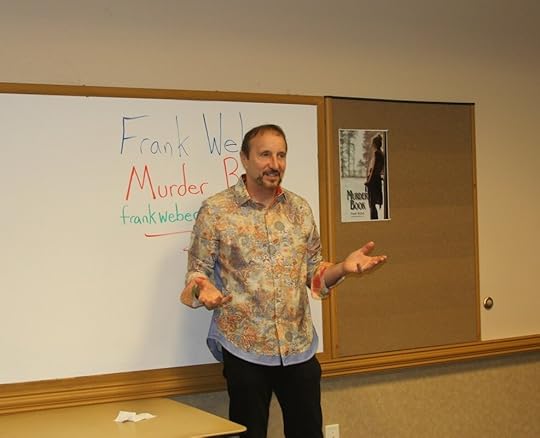
April 11, 2017 St. Cloud State University
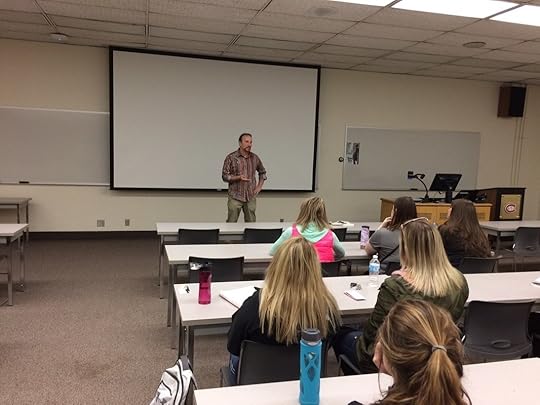
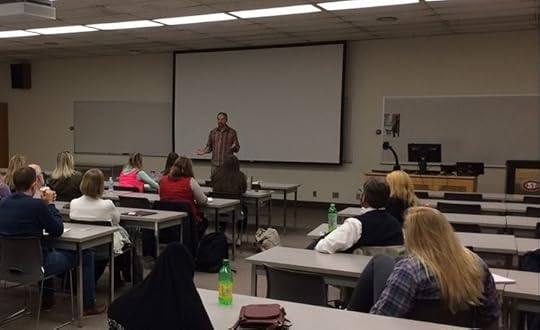
April 12, 2017 Central Lakes College
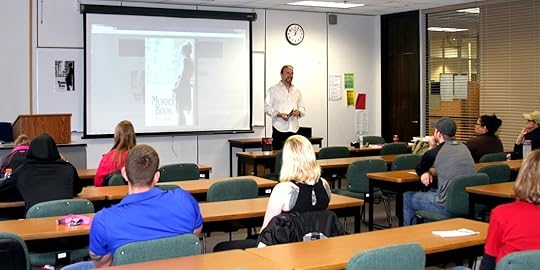
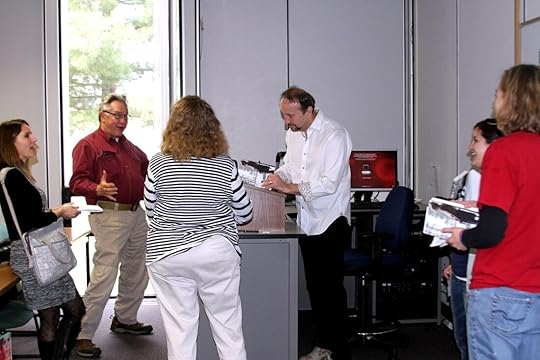
April 12, 2017 College of Saint Benedict
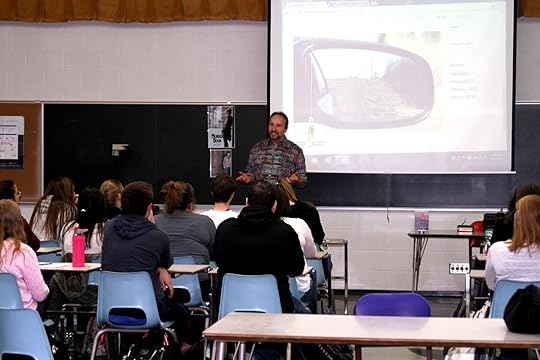
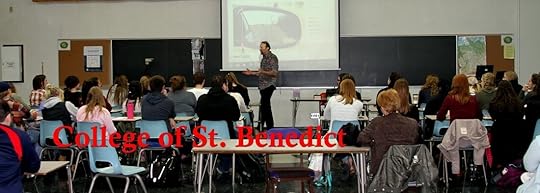
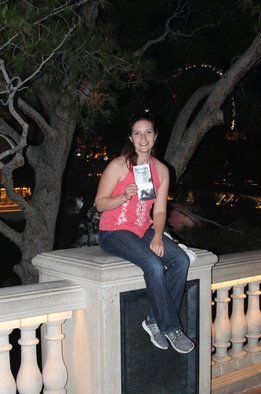
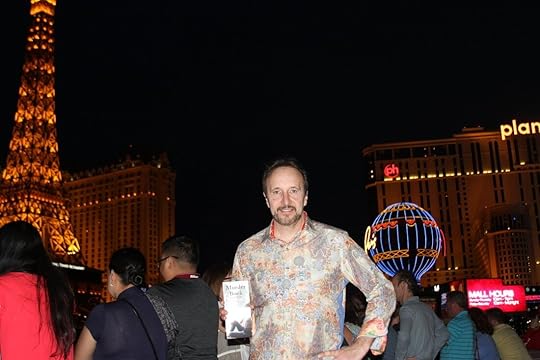 Murder Book in Las Vegas!
Murder Book in Las Vegas! 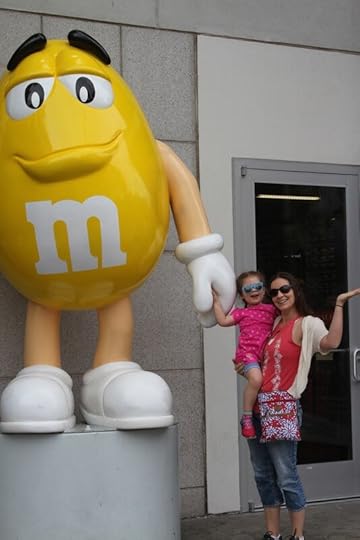 Kaycee is a funny 3 year old as she remembers lines from movies and uses them in the proper context. She was limping and I asked what happened, to which she said, "I got hit in the butt cheek with a blow dart." (from the movie Moana)
Kaycee is a funny 3 year old as she remembers lines from movies and uses them in the proper context. She was limping and I asked what happened, to which she said, "I got hit in the butt cheek with a blow dart." (from the movie Moana) 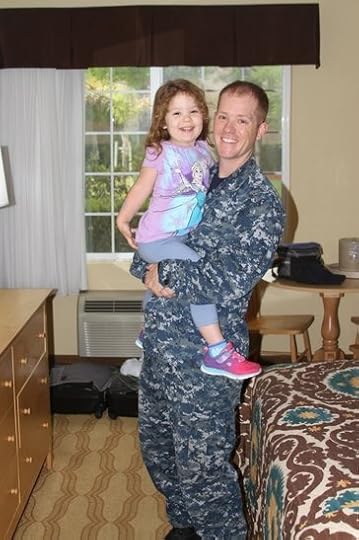 Kaycee and Branden
Kaycee and Branden  Nicolette, Brenda, and Kaycee in a casino
Nicolette, Brenda, and Kaycee in a casino 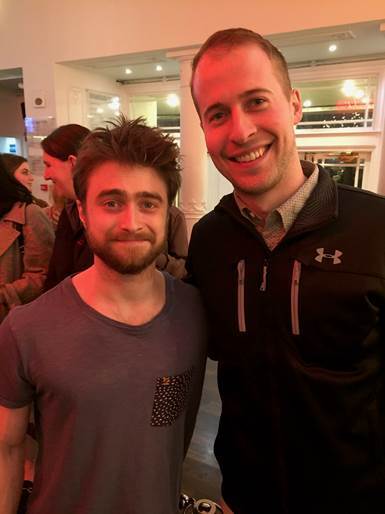
 Preston and Olivia with Daniel Radcliffe (Harry Potter). Preston and Olivia bought tickets for “Guildenstern and Rosencrantz are Dead” starring Daniel Radcliffe during their recent trip to London. They waited and spoke to Daniel after the show and he was friendly and offered to take a picture with each.
Preston and Olivia with Daniel Radcliffe (Harry Potter). Preston and Olivia bought tickets for “Guildenstern and Rosencrantz are Dead” starring Daniel Radcliffe during their recent trip to London. They waited and spoke to Daniel after the show and he was friendly and offered to take a picture with each.  Preston fighting Darth Vader in London
Preston fighting Darth Vader in London  Olivia in Bath, England. Bath became a city as part of the Roman empire in 60 AD when the Romans built “baths” around the city’s hot springs. New construction is required to use bath stone, so the city remains built of stone with the appealing honey coloring.
Olivia in Bath, England. Bath became a city as part of the Roman empire in 60 AD when the Romans built “baths” around the city’s hot springs. New construction is required to use bath stone, so the city remains built of stone with the appealing honey coloring. 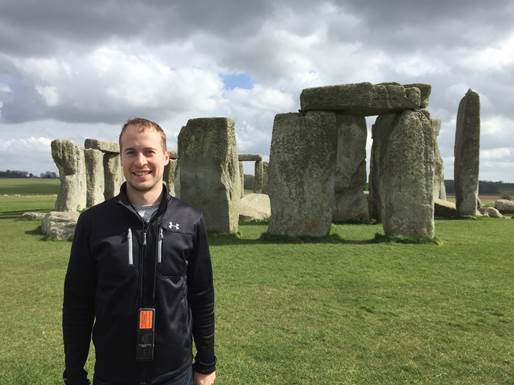 Preston at Stonehenge. Each stone is about 13 feet high, 6 feet wide and weighs 25 tons. Radiocarbon dating suggests the stones were raised about 2400 years before the birth of Jesus Christ.
Preston at Stonehenge. Each stone is about 13 feet high, 6 feet wide and weighs 25 tons. Radiocarbon dating suggests the stones were raised about 2400 years before the birth of Jesus Christ. Hit the previous button below twice to review my Easter blog. Happy Easter!
Published on April 13, 2017 13:50
Harry Potter, Las Vegas and College
 Speaking on Murder Book in Las Vegas I am offering people the opportunity to come up with some “killer music” to be played in the background for the Murder Book opening on May 10 at the SCSU Welcome Center. While I’m serious about forensic work, and Murder Book, I’m thinking we could make the book opening lighter by involving people in selecting some “killer music.” Let me throw out some examples: Without a Trace (Soul Asylum), Dyer Maker (Led Zeppelin), Goodbye to You (Scandal), Dead Flowers (Rolling Stones), Push (Matchbox 20), Don’t Speak (No Doubt), Santeria (Sublime), etc… I’m looking for ironic, not gory. For Example: When Gwen Stefani wrote, “I can see us dying…” in ‘Don’t Speak’ she probably wasn’t thinking it would be played at a murder thriller opening. Comment with your suggestions or to simply support one of the songs suggested.
Speaking on Murder Book in Las Vegas I am offering people the opportunity to come up with some “killer music” to be played in the background for the Murder Book opening on May 10 at the SCSU Welcome Center. While I’m serious about forensic work, and Murder Book, I’m thinking we could make the book opening lighter by involving people in selecting some “killer music.” Let me throw out some examples: Without a Trace (Soul Asylum), Dyer Maker (Led Zeppelin), Goodbye to You (Scandal), Dead Flowers (Rolling Stones), Push (Matchbox 20), Don’t Speak (No Doubt), Santeria (Sublime), etc… I’m looking for ironic, not gory. For Example: When Gwen Stefani wrote, “I can see us dying…” in ‘Don’t Speak’ she probably wasn’t thinking it would be played at a murder thriller opening. Comment with your suggestions or to simply support one of the songs suggested.There are a few songs I will include because they are either referenced in the book or go along with the story, such as Missing You (Alison Krauss and John Waite), Thrasher (Neil Young), Against the Wind (Bob Seger), All Along the Watchtower (Jimi Hendrix) and September When It Comes (Roseanne and Johnny Cash).
It was important for me that Murder Book address forensic work accurately and address every day life appropriately. Everybody who has watched Law and Order has viewed the scene where the guy continues loading the van when he’s being questioned by two homicide investigators. Can anybody think of a job where homicide is so common that people don’t stop work when being questioned by homicide investigators? He evidently loves loading boxes…
My daughter, Nicolette, and I drove from California to Minnesota last week, with a stop in Las Vegas where I spoke at the Aliante Library in Las Vegas. They say that the only way to leave Las Vegas with a million dollars is to go there with 2 million dollars. We enjoyed some great food, but it was expensive. I’ve never been much of a gambler, as I can’t logically justify it in my brain, but I have nothing against people who gamble. It’s entertainment. When I leave a movie I don’t expect to walk out with more money than I entered, and if people can understand that, it’s fine. It was a great time and I have to share a couple absurd observations. A Denver gas station had a sign which read, “If God isn’t a Broncos fan, why are sunsets orange?” Driving through Iowa there is a large green sign that points to “Manly Forest City.” Evidently they were feeling a little insecure about masculinity in Forest City. (There’s a picture of the sign posted on the internet.) My favorite sign was one which read, “Let’s make America kind again.”
This week I presented on Murder Book at St. Cloud State University, at Central Lakes College and culminating with the College of St. Benedicts last night. The reception was great at each. Last night at CSB security needed to be called to open up dividers an enlarge the classroom due to the large audience. Thank you! I will return to the usual blogs next week. I’ll end with some Demtri Martin quotes:
I need to end with some Demetri Martin quotes:
~The digital camera is great invention because it allows us to reminisce immediately. “Hey remember this, what we look liked 30 seconds ago? Great times.”
~The worst time to have a heart attack is during a game of charades.
~Swimming is an odd sport. Sometimes you do it for fun, and sometimes you do it not to die. Your clothing is the best indicator—swimsuit—good.”
~The biathlon at the Olympics is an odd event. You ski, stop and shoot a rifle, and ski again. It’s like having someone swim a lap, jump out of the pool and strangle someone, then jump back in and swim another lap. Jerry Seinfeld
Don’t you think it’s a little odd that we still measure rockets by horsepower? How many horses do you think it takes to pull a rocket into space?
Busy getting books out. I will get back to regular blogging next week.
Thanks for listening,
Frank April 7, 2017 Aliante Library

April 11, 2017 St. Cloud State University


April 12, 2017 Central Lakes College


April 12, 2017 College of Saint Benedict



 Preston and Olivia with Daniel Radcliffe (Harry Potter). Preston and Olivia bought tickets for “Guildenstern and Rosencrantz are Dead” starring Daniel Radcliffe during their recent trip to London. They waited and spoke to Daniel after the show and he was friendly and offered to take a picture with each.
Preston and Olivia with Daniel Radcliffe (Harry Potter). Preston and Olivia bought tickets for “Guildenstern and Rosencrantz are Dead” starring Daniel Radcliffe during their recent trip to London. They waited and spoke to Daniel after the show and he was friendly and offered to take a picture with each.  Preston fighting Darth Vader in London
Preston fighting Darth Vader in London  Olivia in Bath, England. Bath became a city as part of the Roman empire in 60 AD when the Romans built “baths” around the city’s hot springs. New construction is required to use bath stone, so the city remains built of stone with the appealing honey coloring.
Olivia in Bath, England. Bath became a city as part of the Roman empire in 60 AD when the Romans built “baths” around the city’s hot springs. New construction is required to use bath stone, so the city remains built of stone with the appealing honey coloring.  Preston at Stonehenge. Each stone is about 13 feet high, 6 feet wide and weighs 25 tons. Radiocarbon dating suggests the stones were raised about 2400 years before the birth of Jesus Christ.
Preston at Stonehenge. Each stone is about 13 feet high, 6 feet wide and weighs 25 tons. Radiocarbon dating suggests the stones were raised about 2400 years before the birth of Jesus Christ. Hit the previous button below twice to review my Easter blog. Happy Easter!
Published on April 13, 2017 13:50
April 4, 2017
Pre-orders
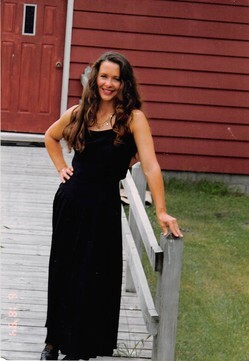
 Sometimes things don’t arrive when they are expected…
Sometimes things don’t arrive when they are expected… 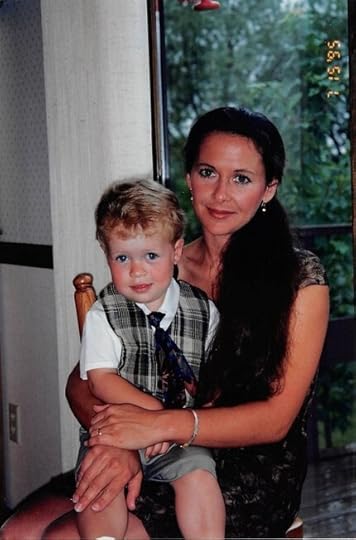 but their arrival proves to be worth the wait. I’m sorry to tell you the printer informed us today the books will not arrive until Wednesday, April 12. We will send out pre-orders as soon as they arrive. Thank you for your kindness.
but their arrival proves to be worth the wait. I’m sorry to tell you the printer informed us today the books will not arrive until Wednesday, April 12. We will send out pre-orders as soon as they arrive. Thank you for your kindness.Frank Weber
Published on April 04, 2017 05:53



